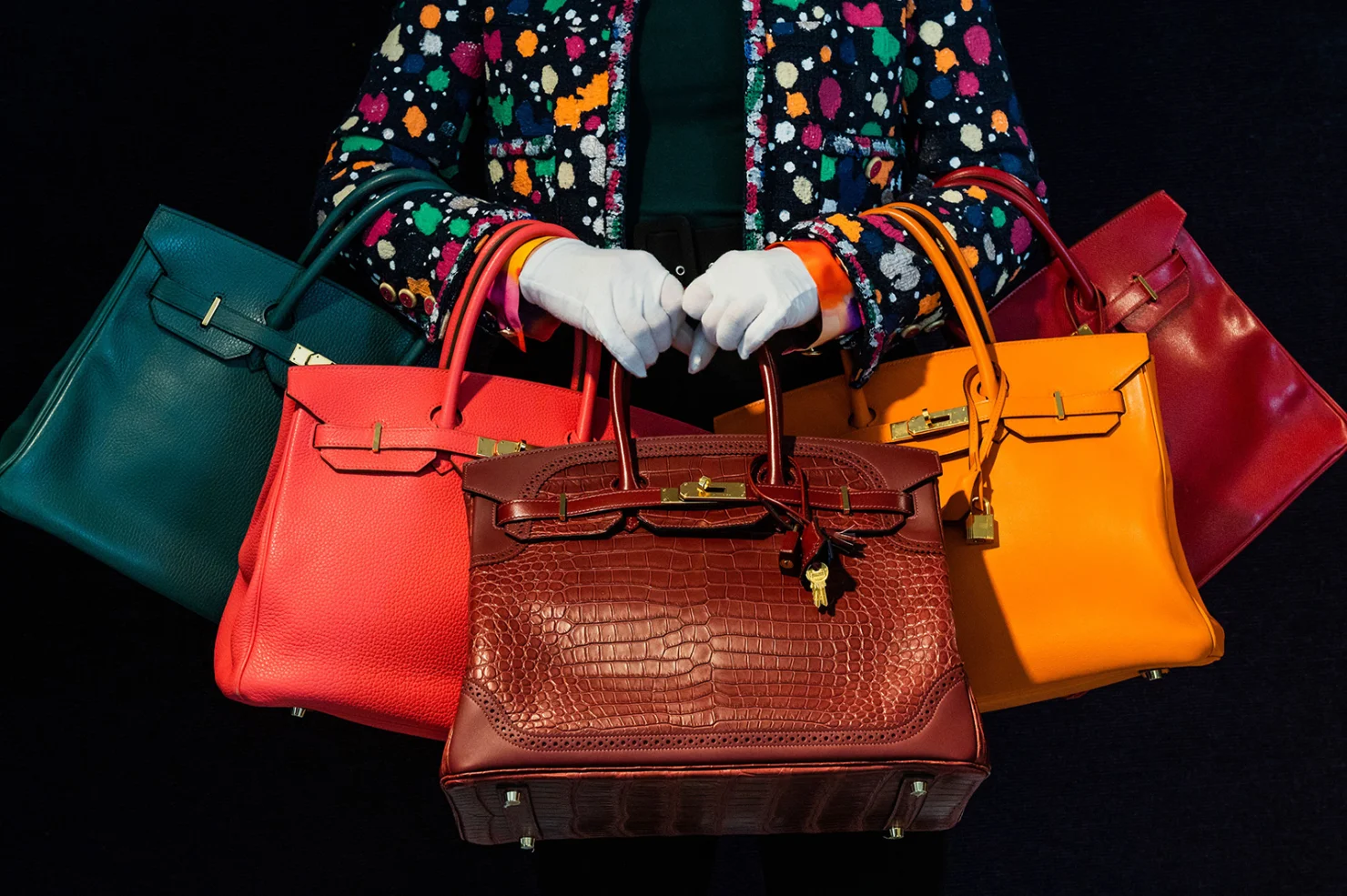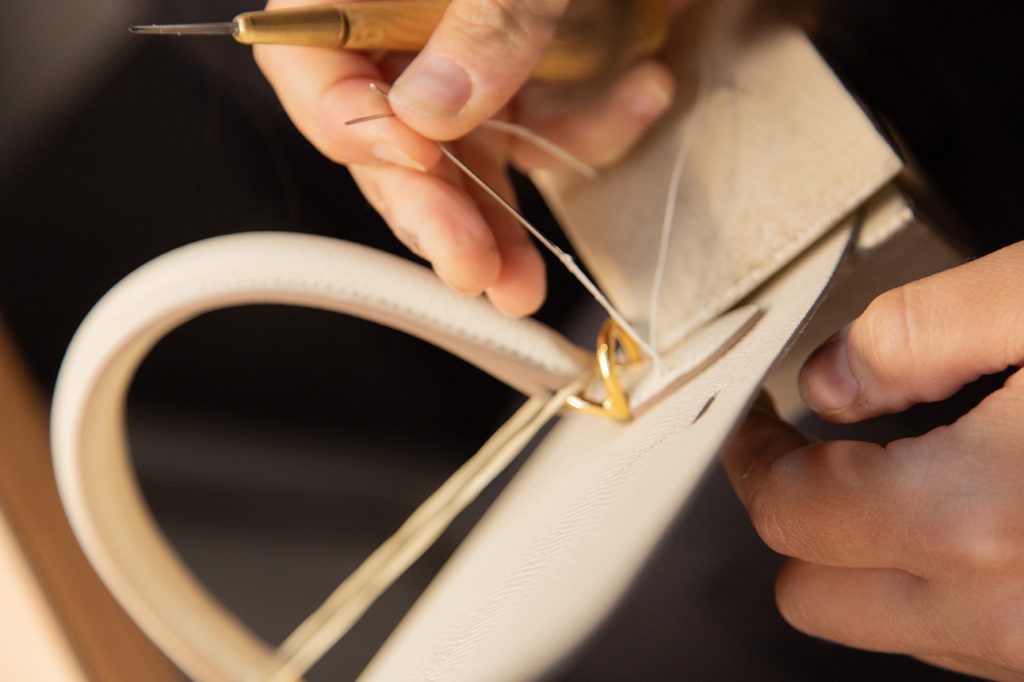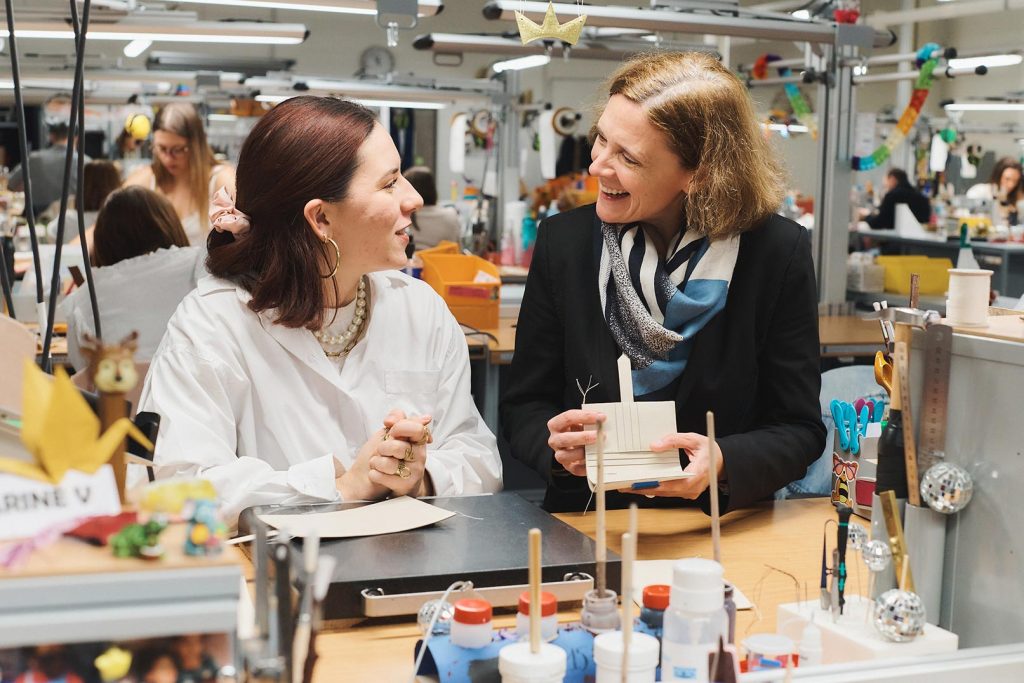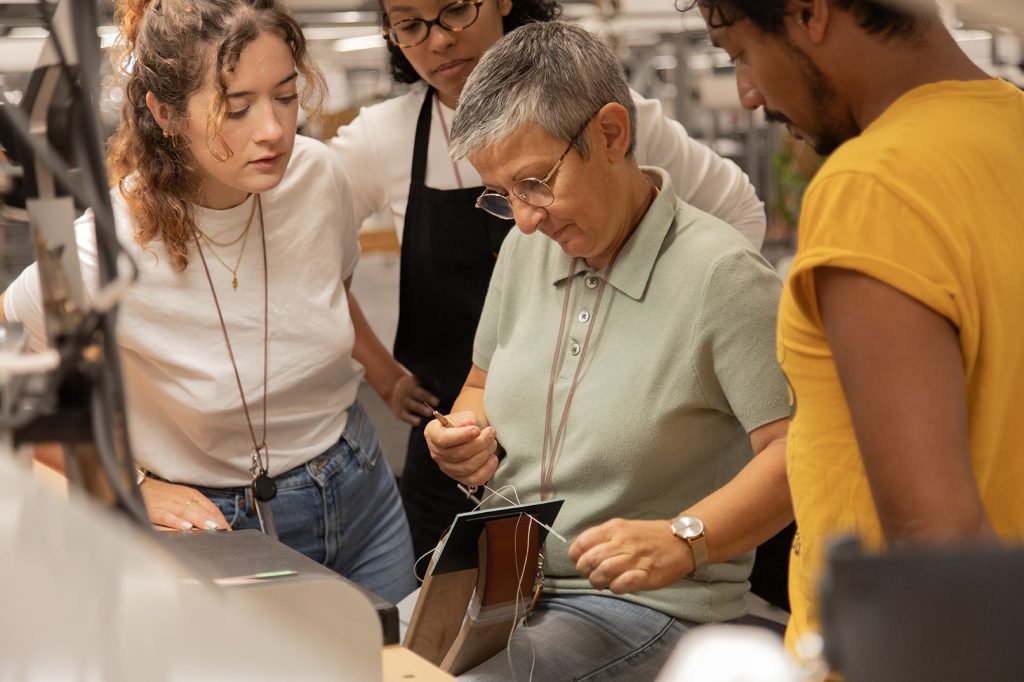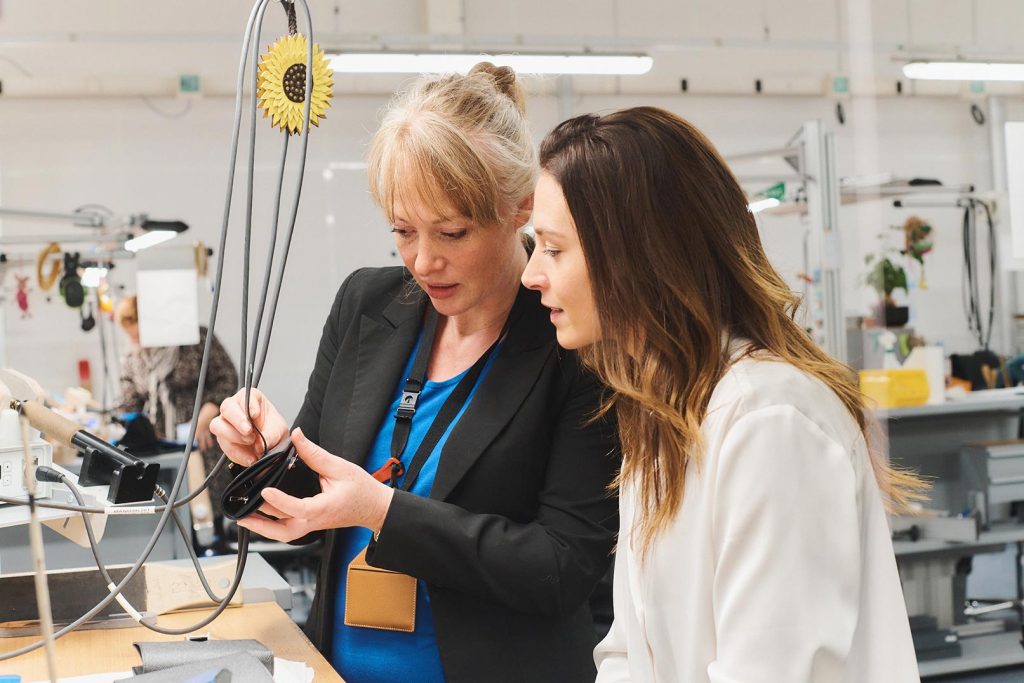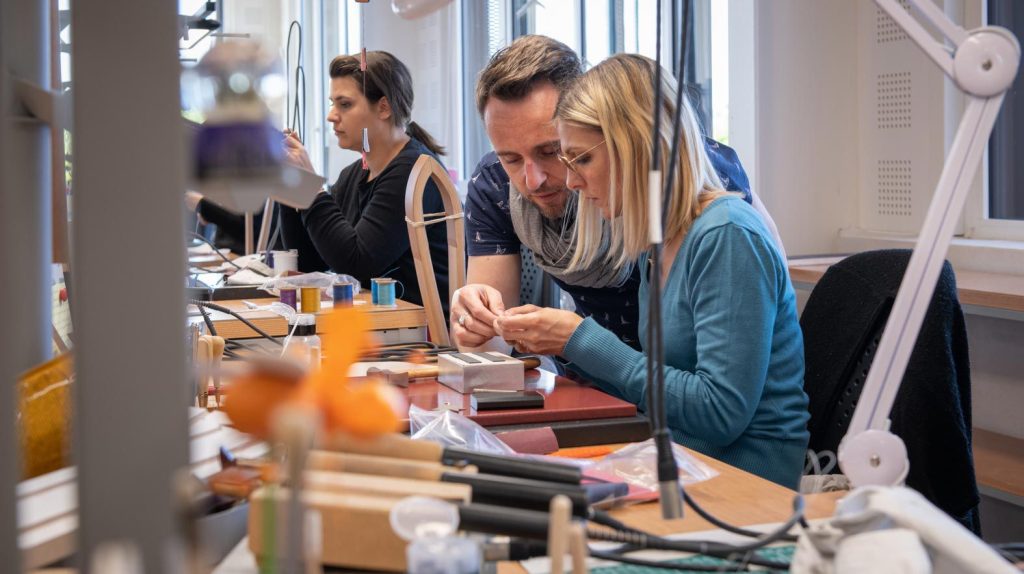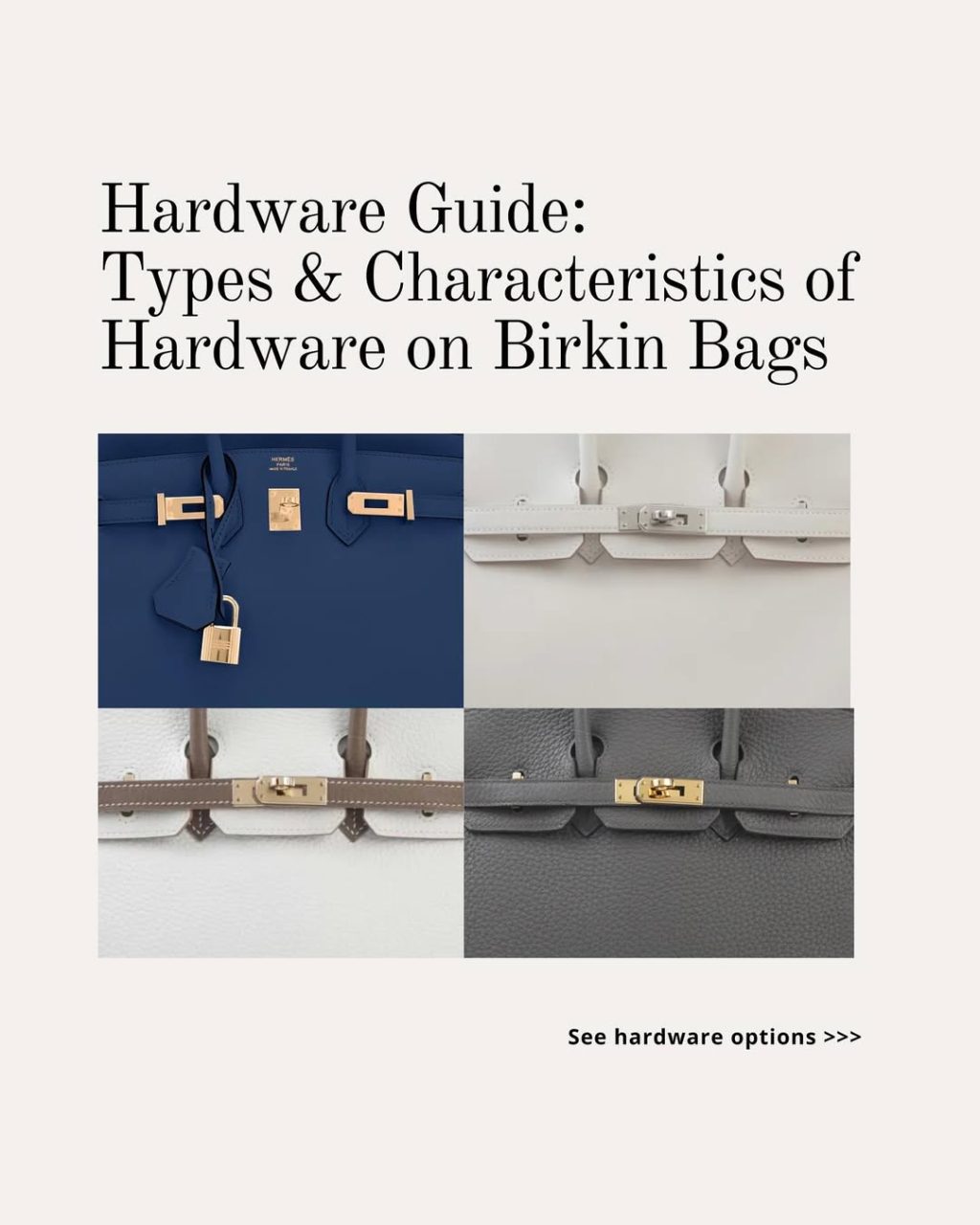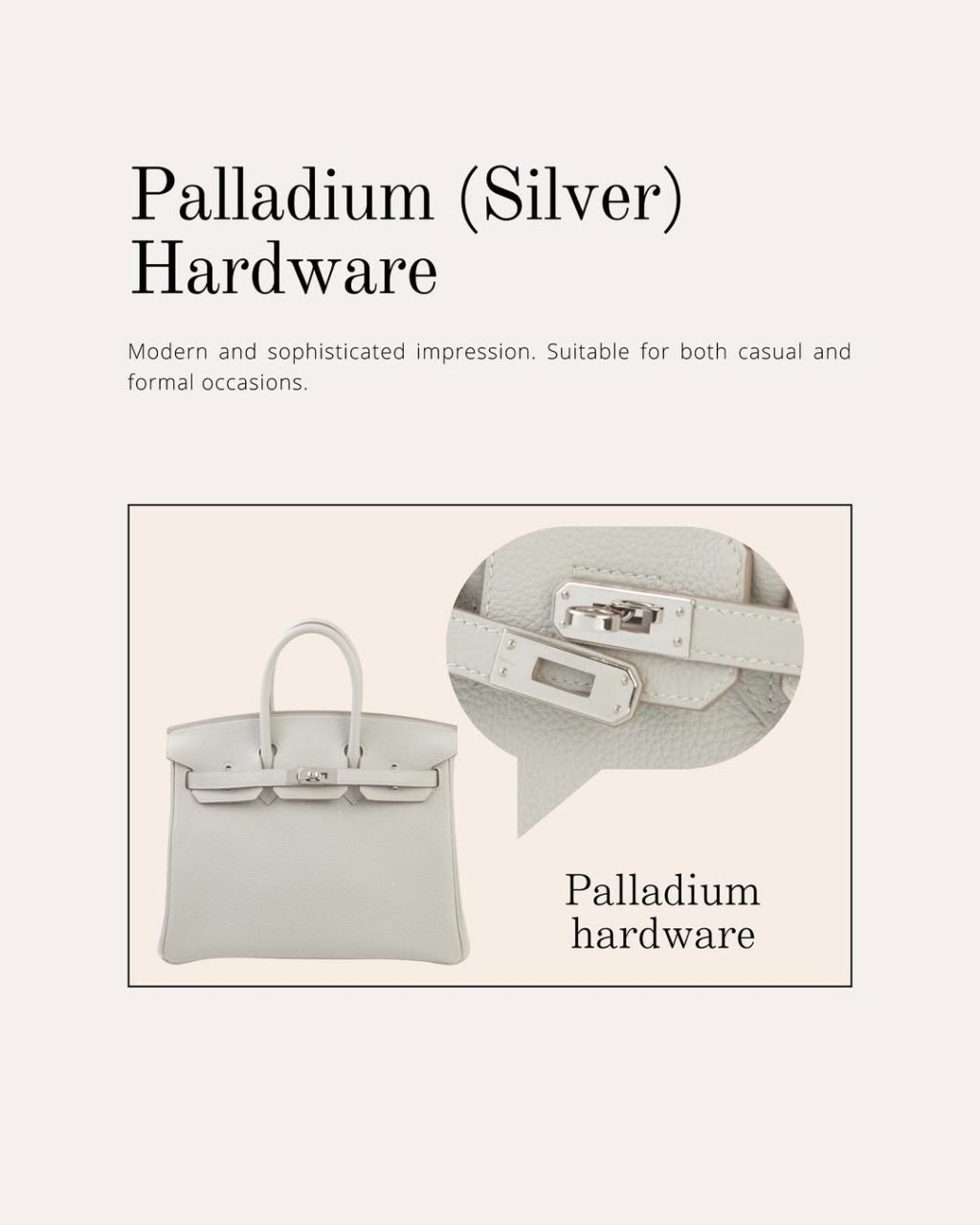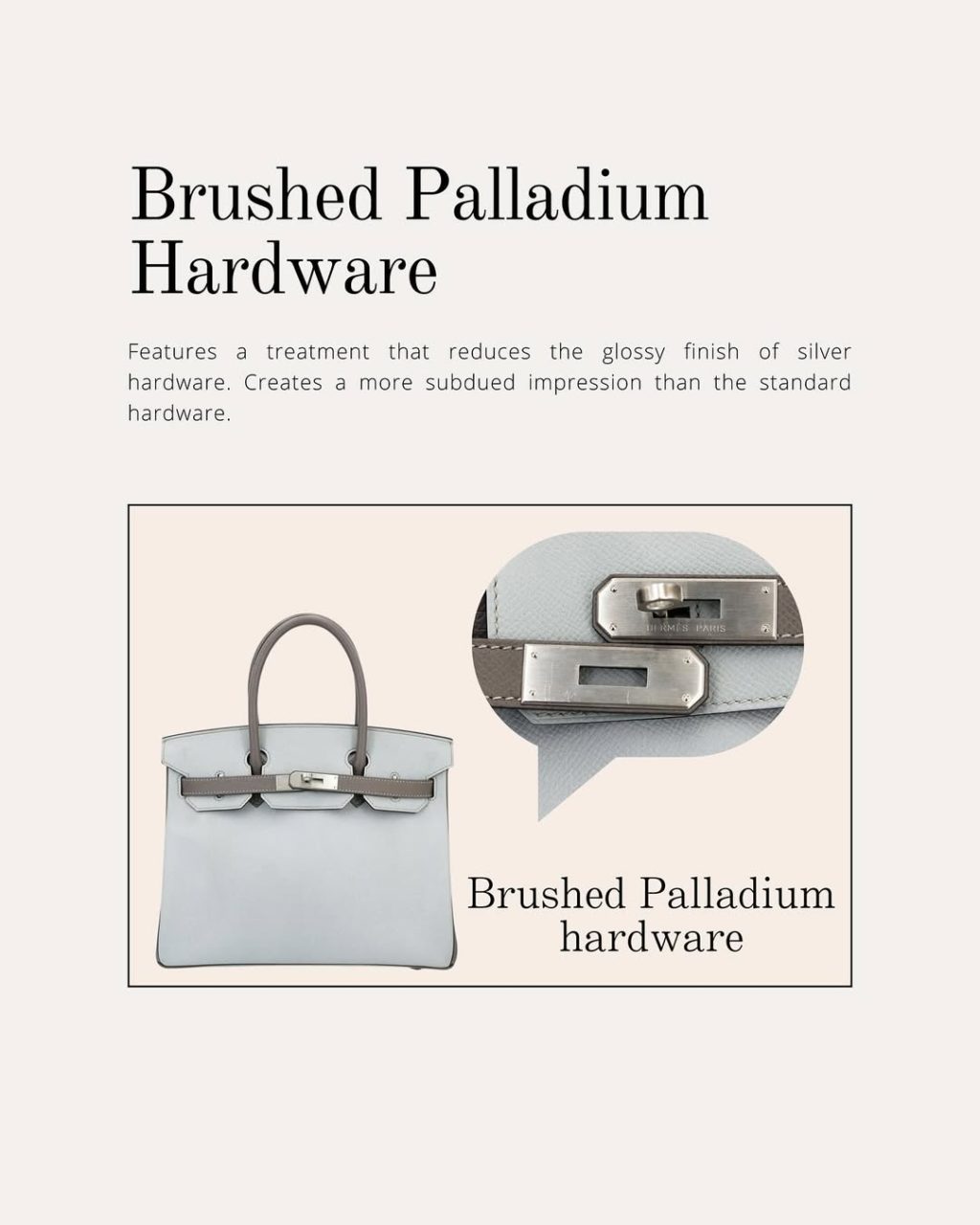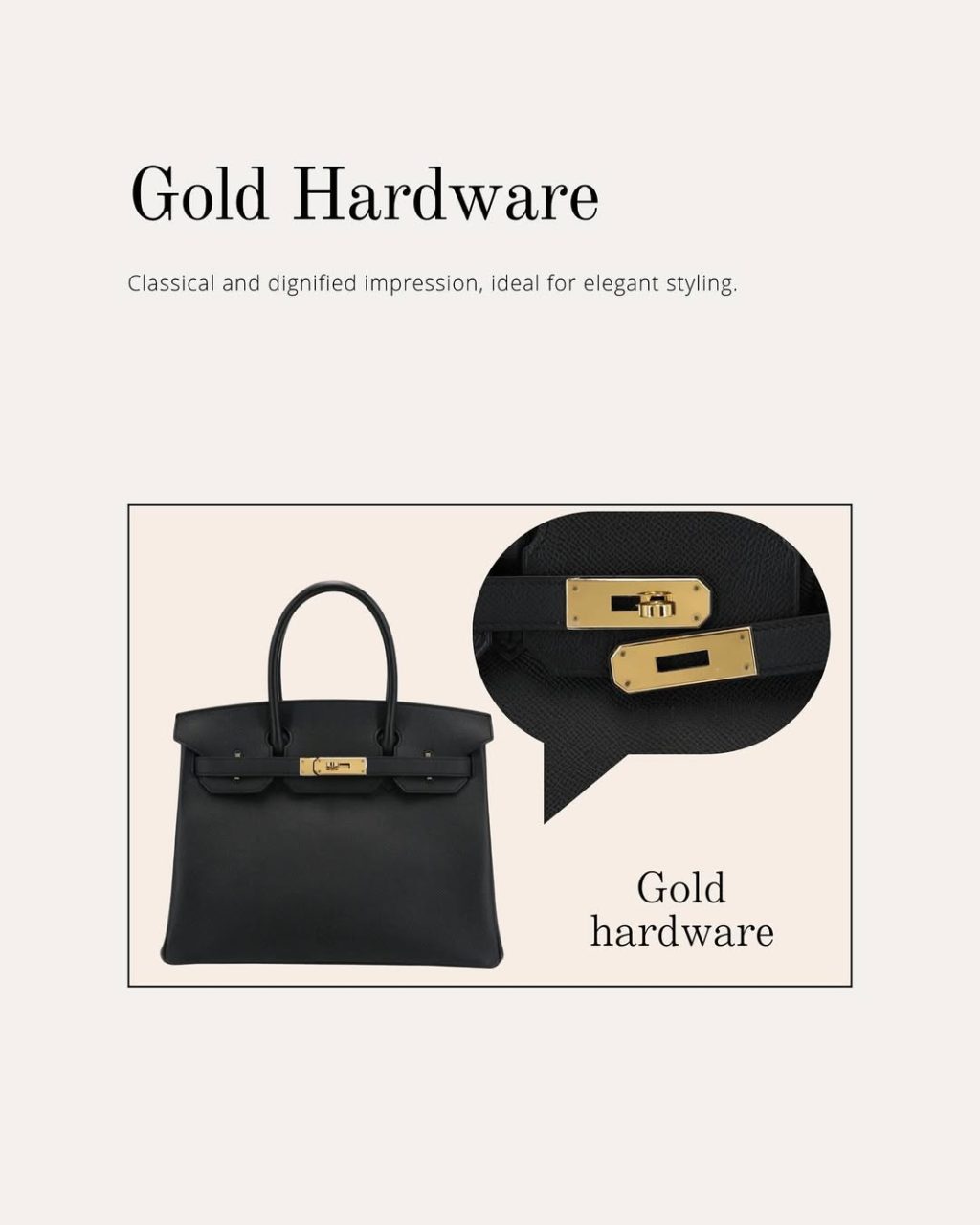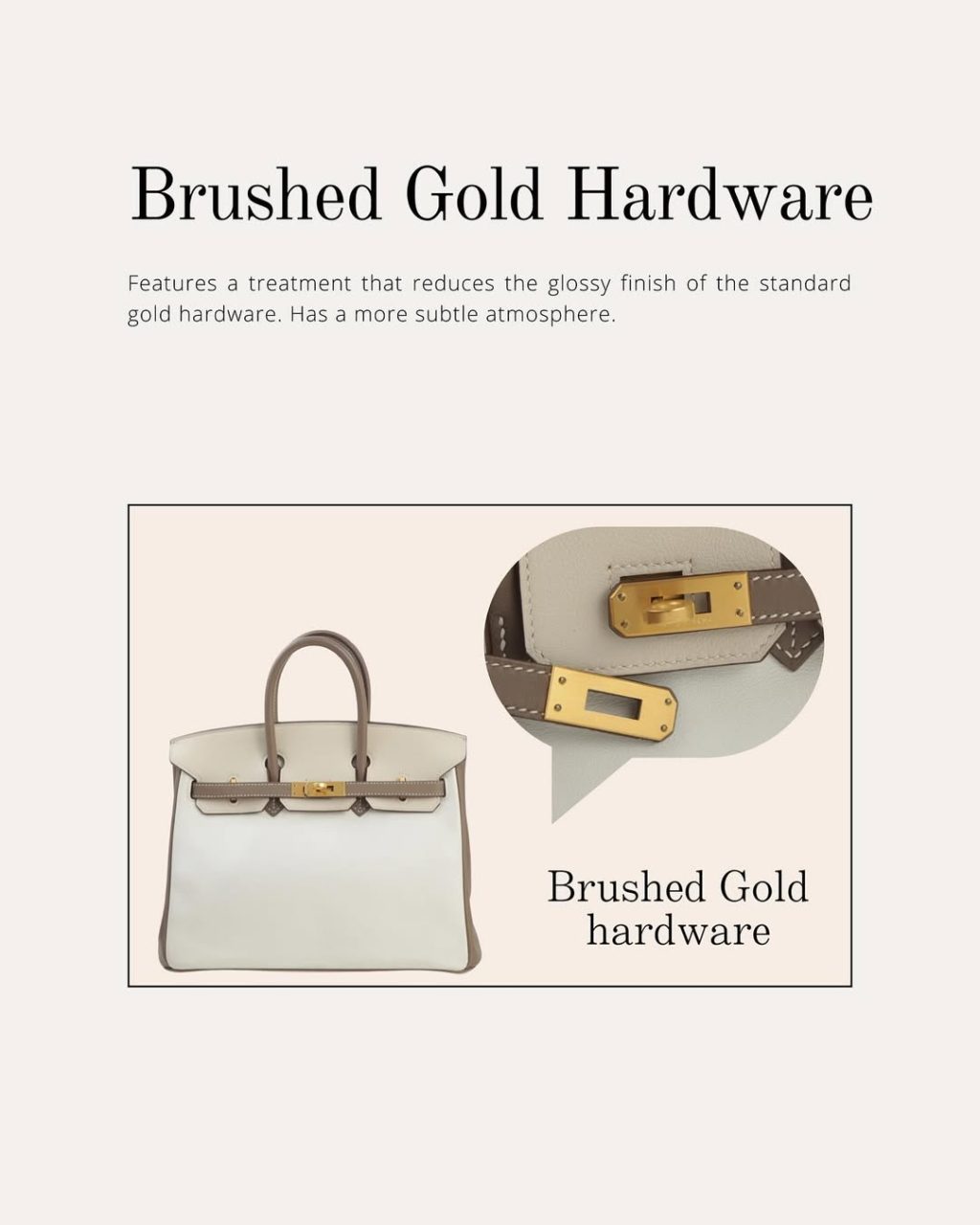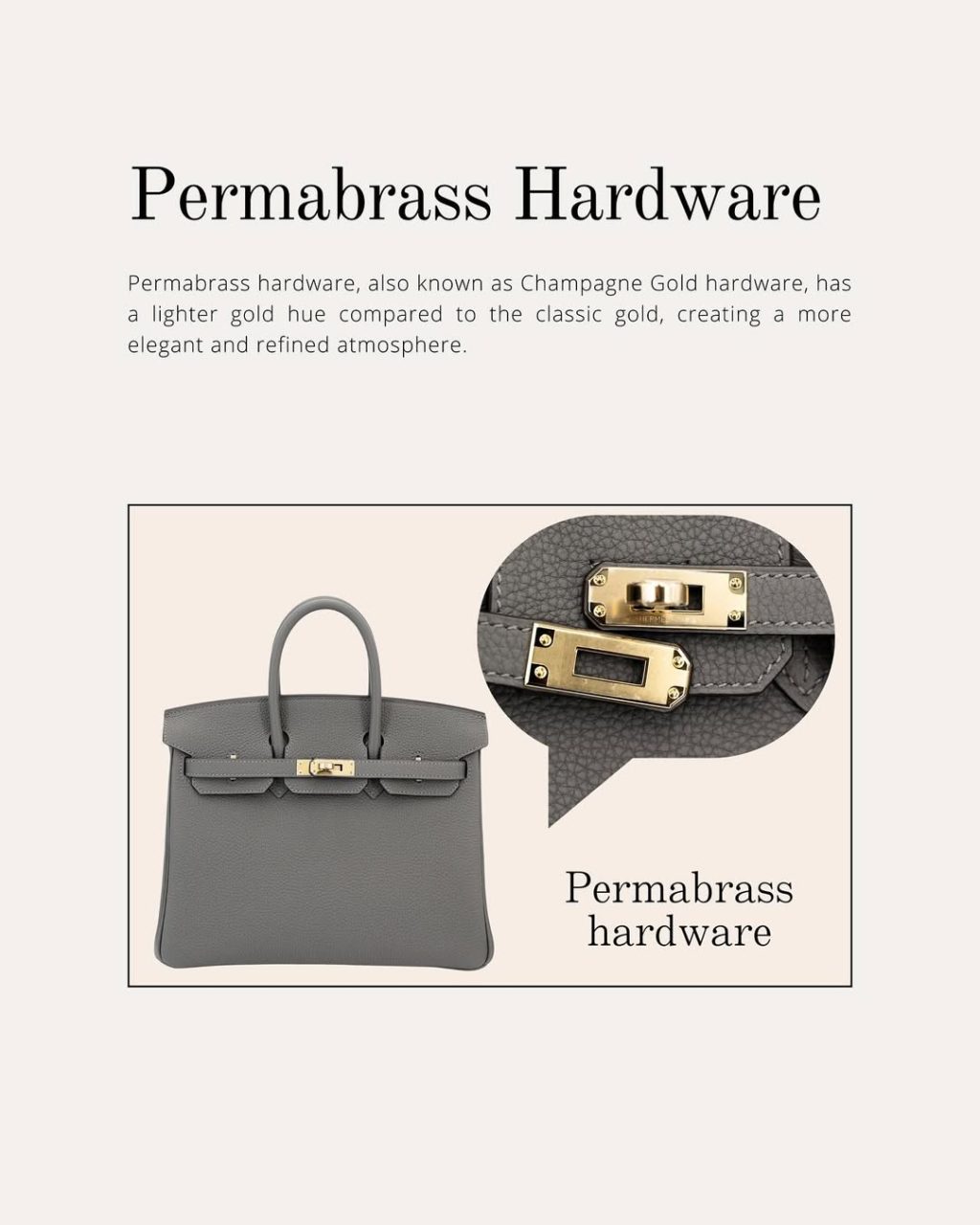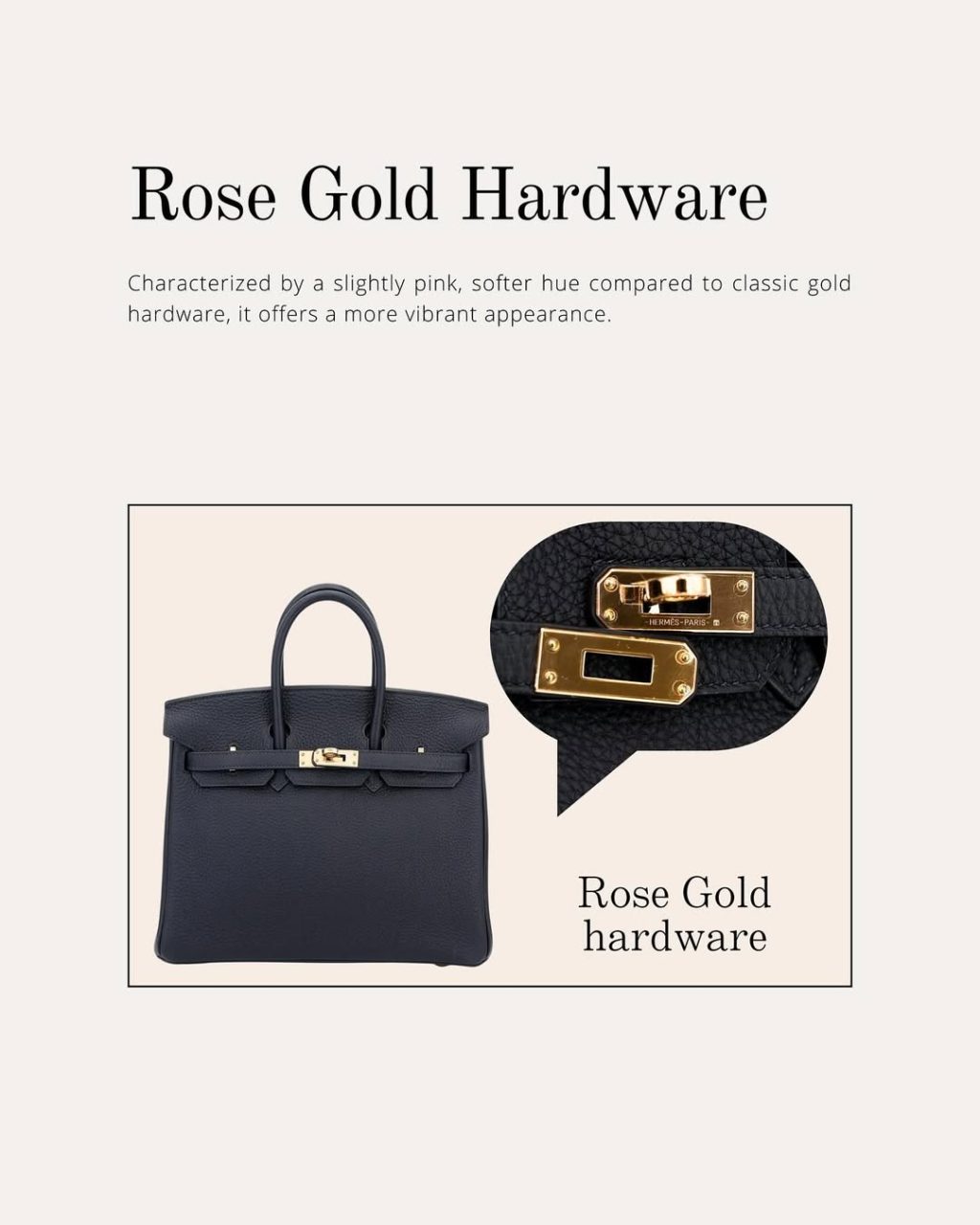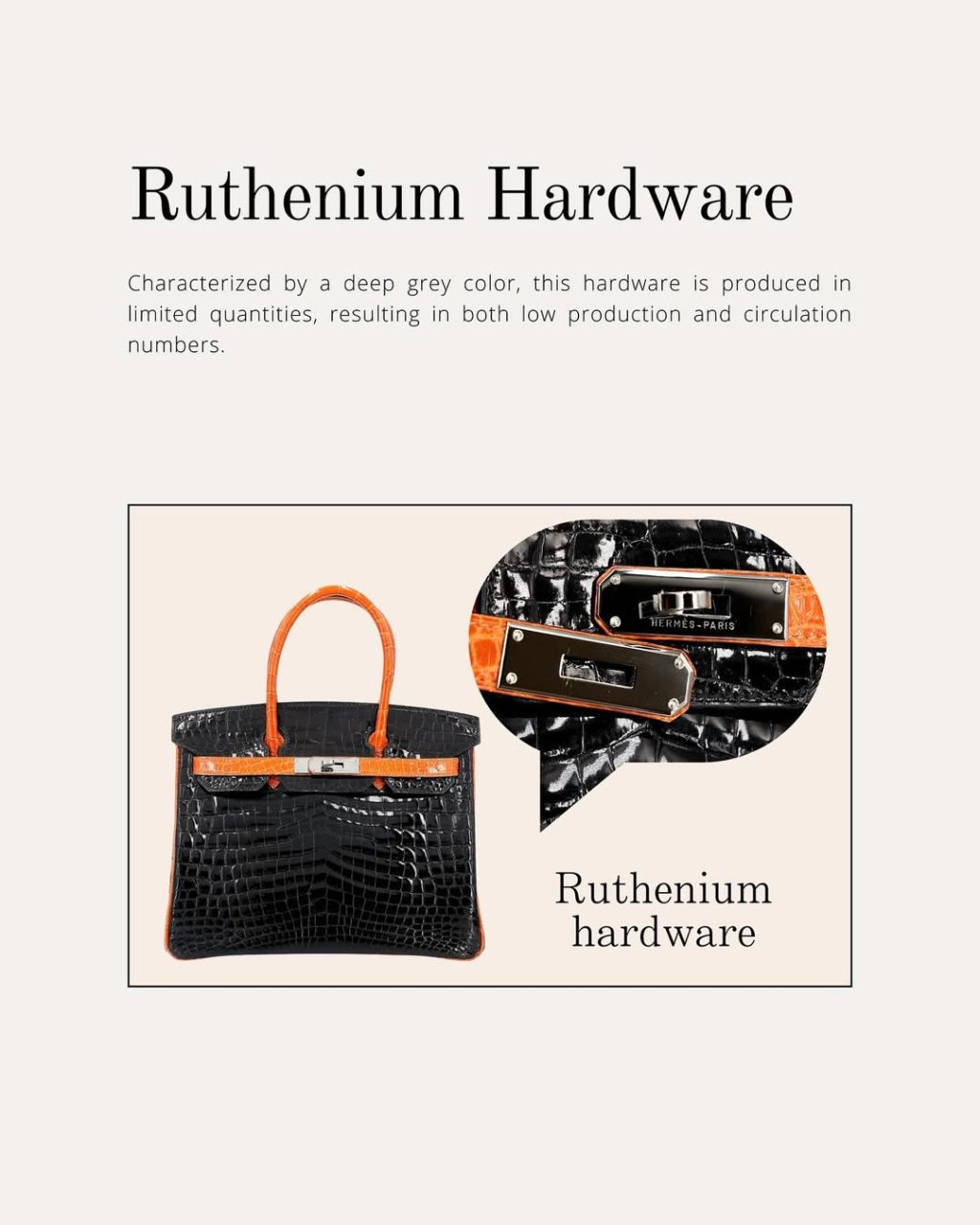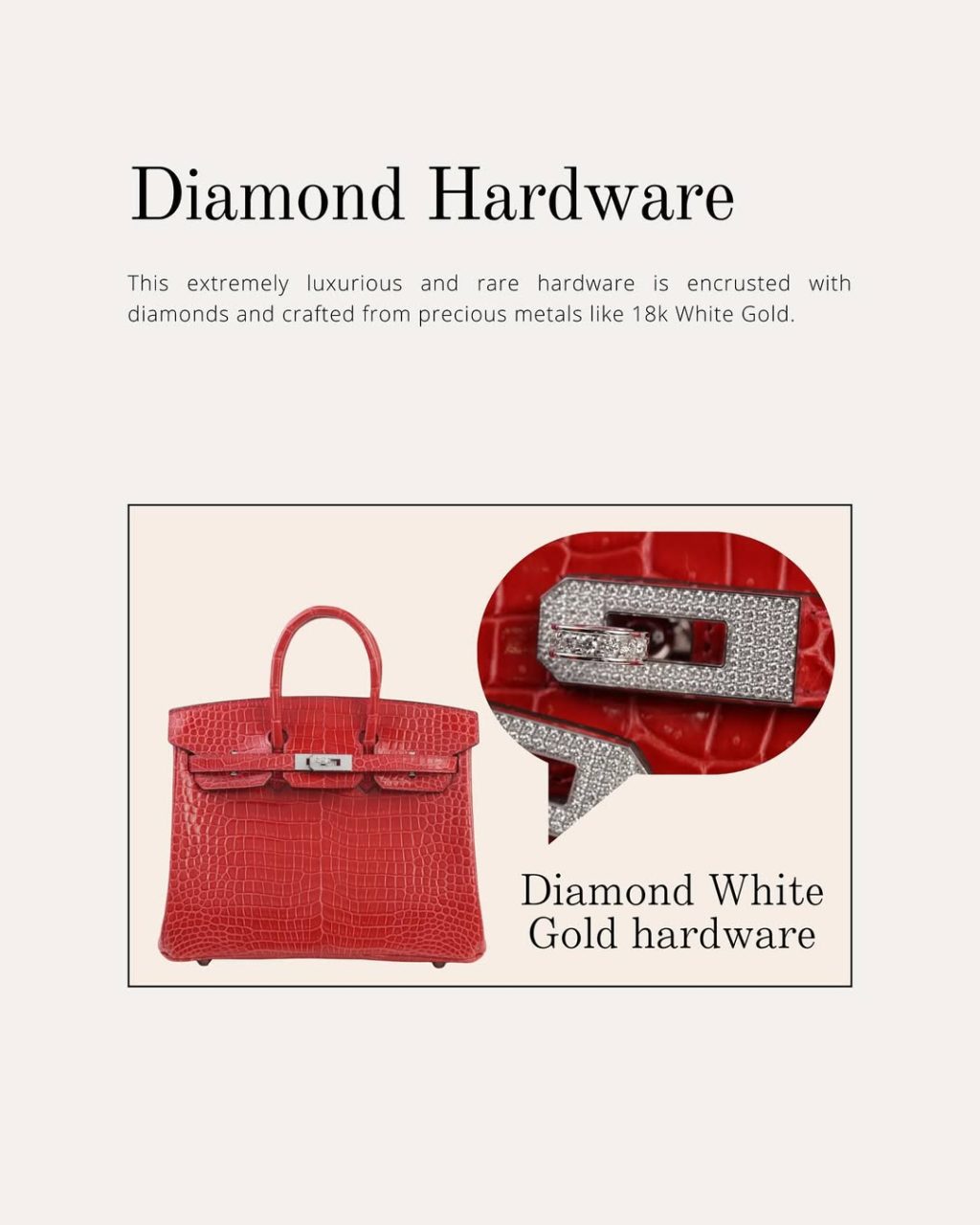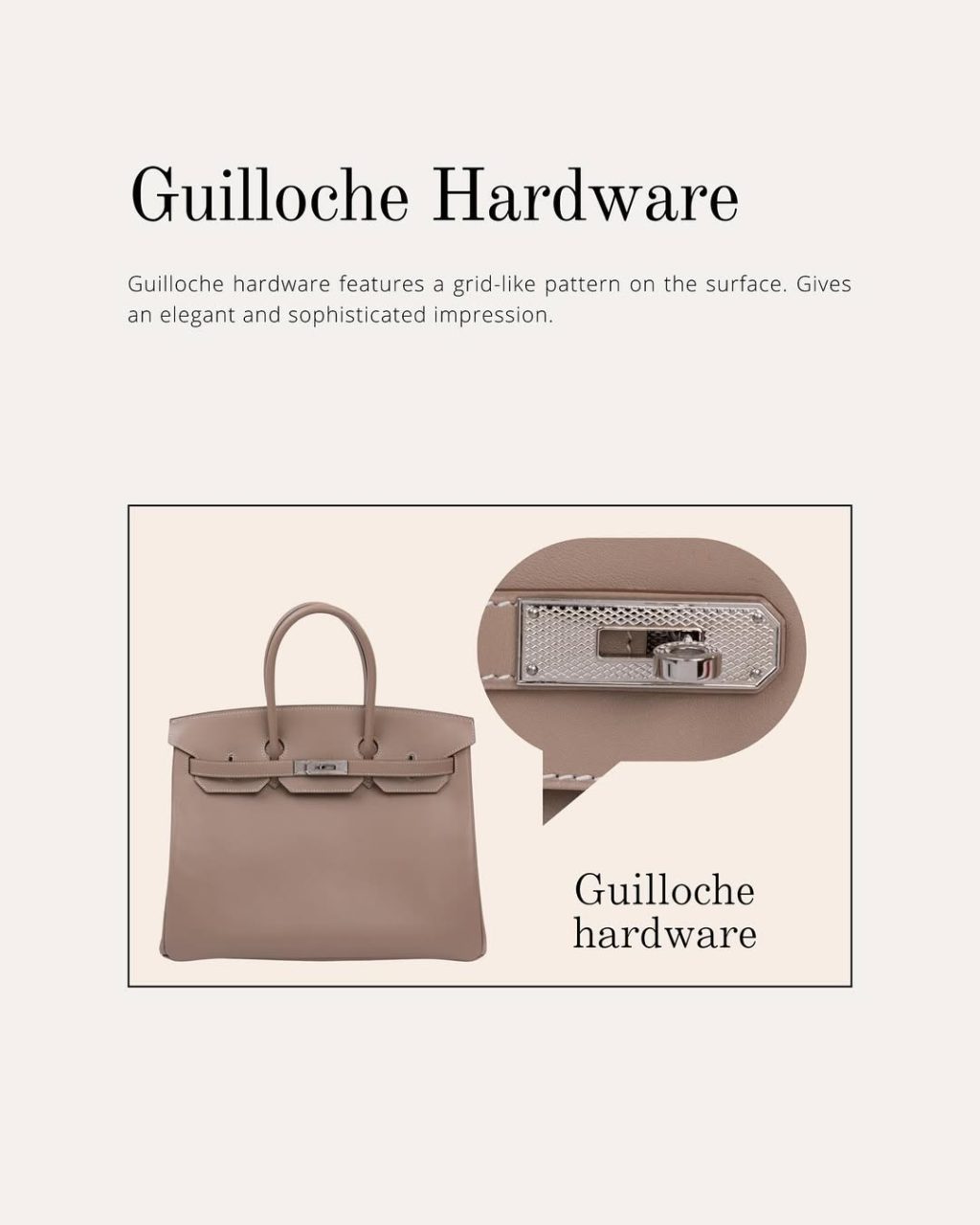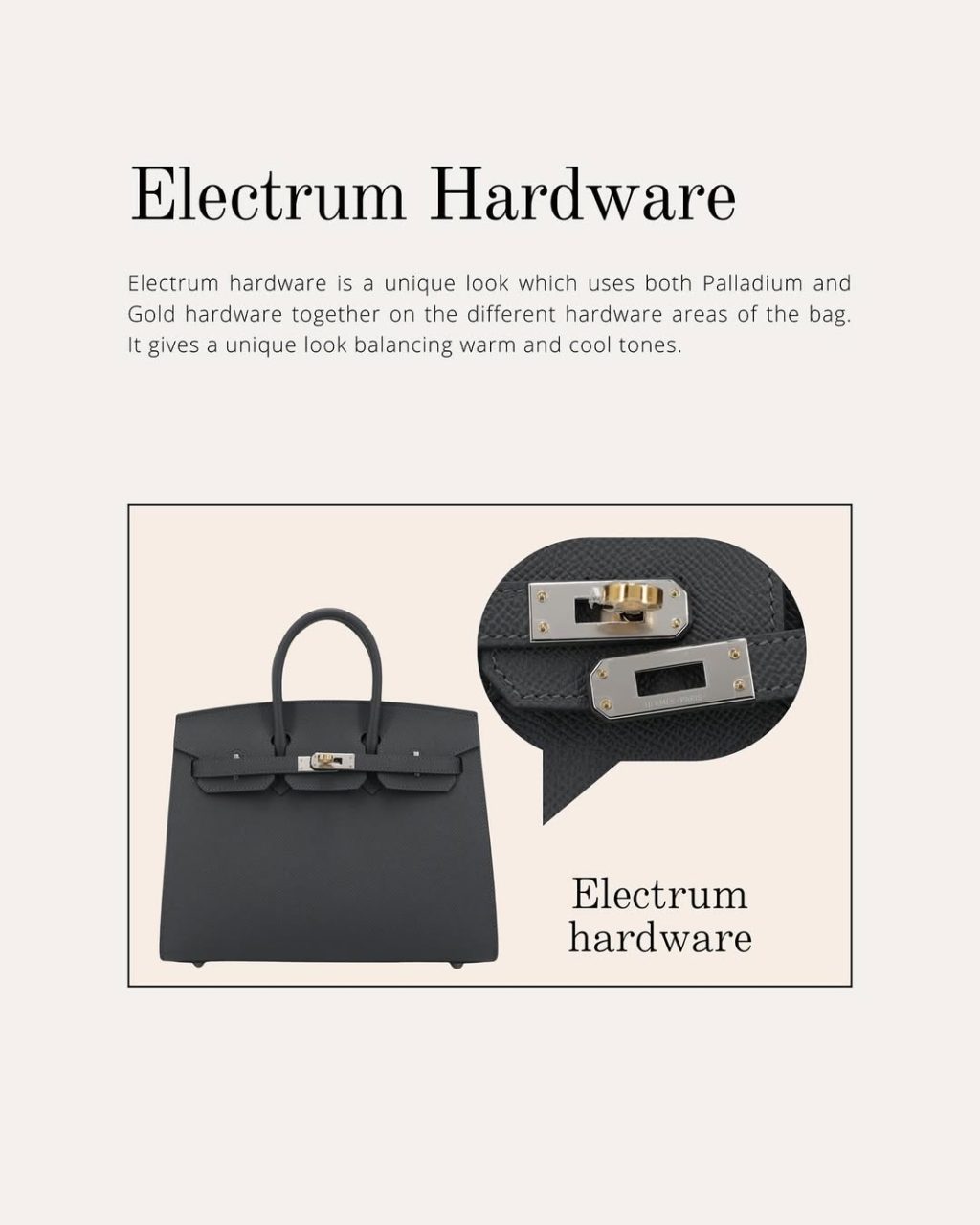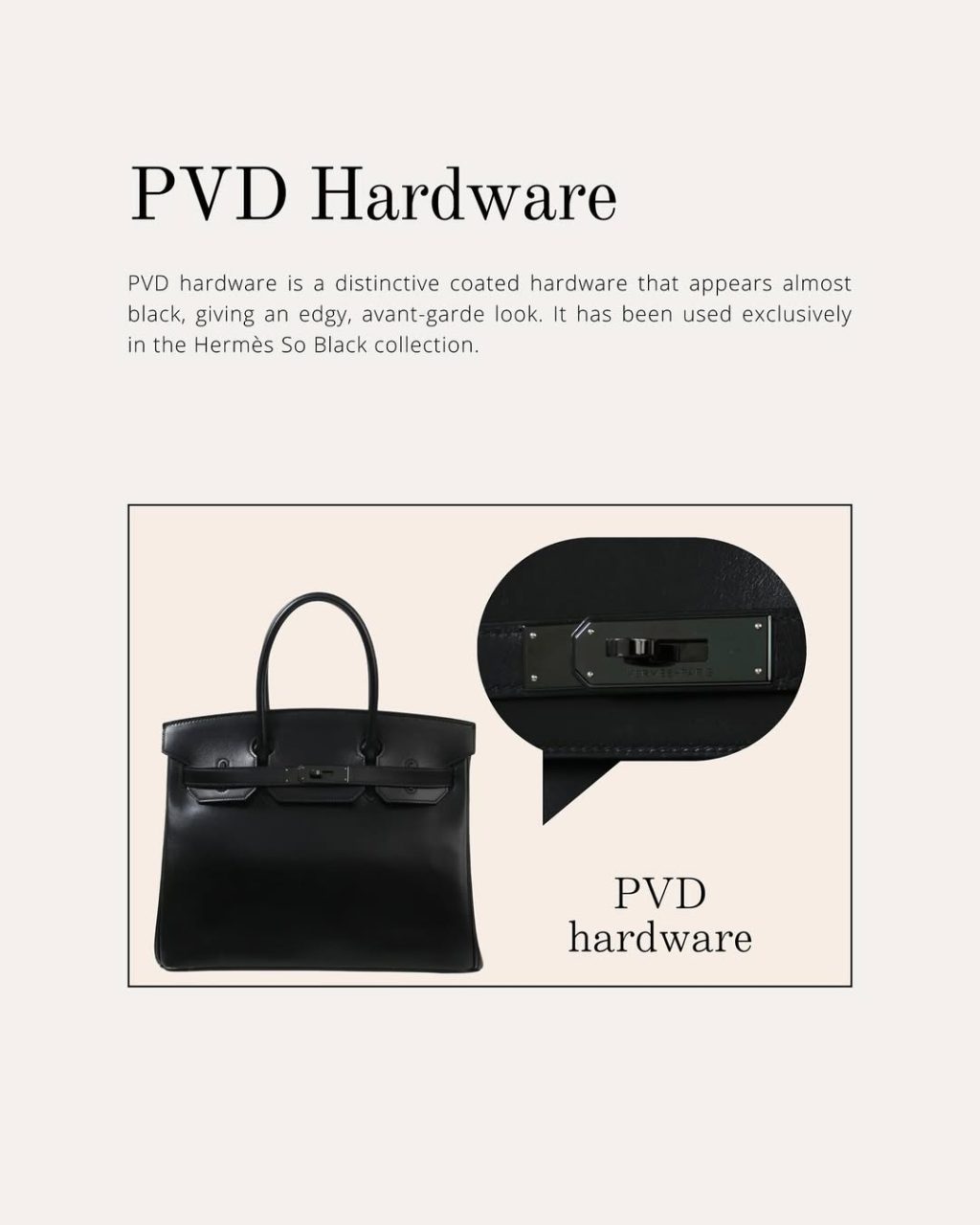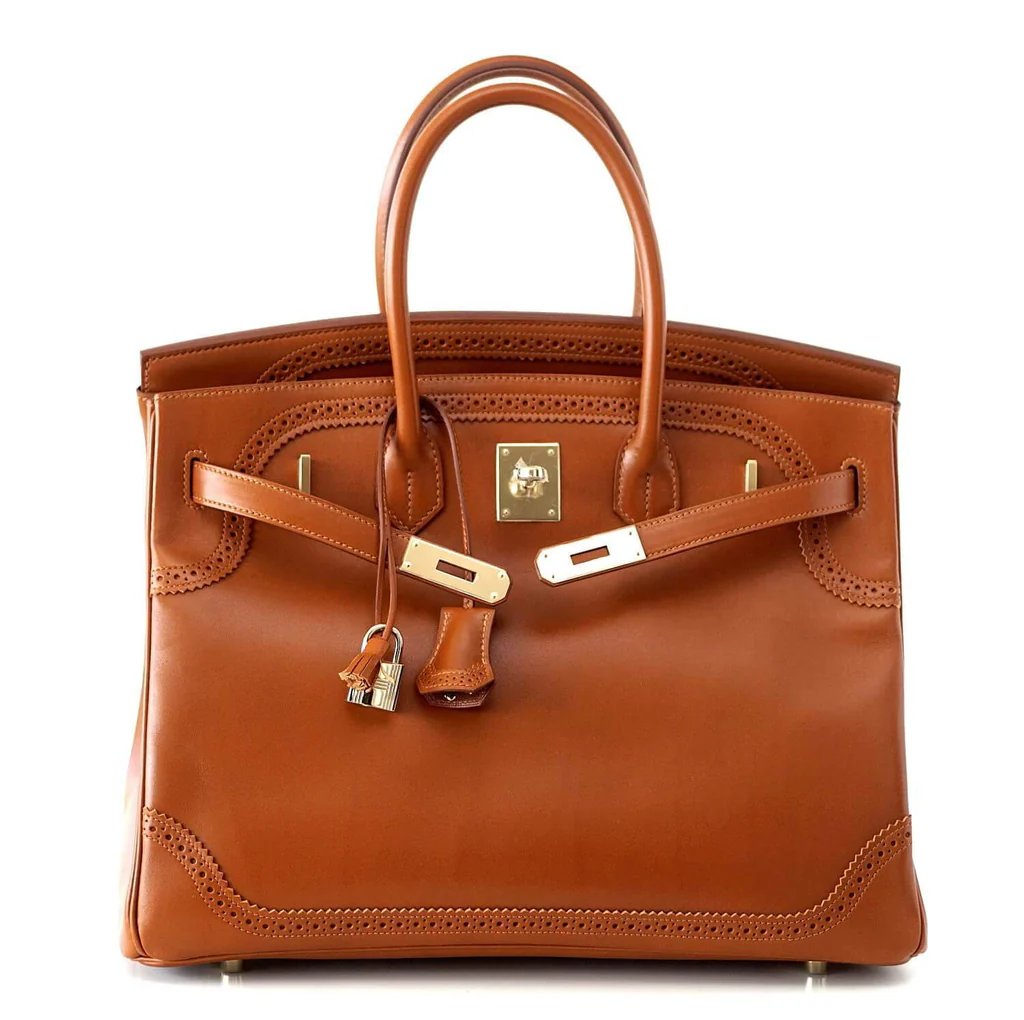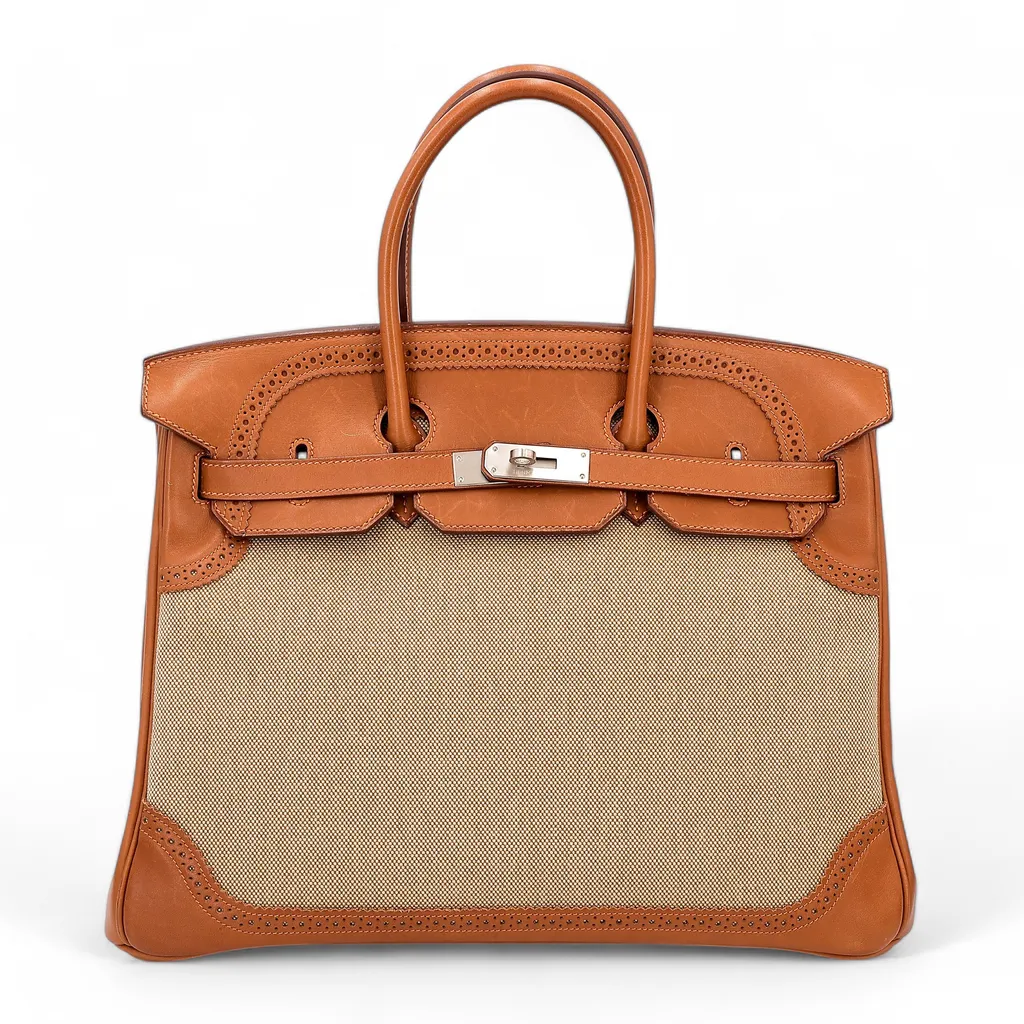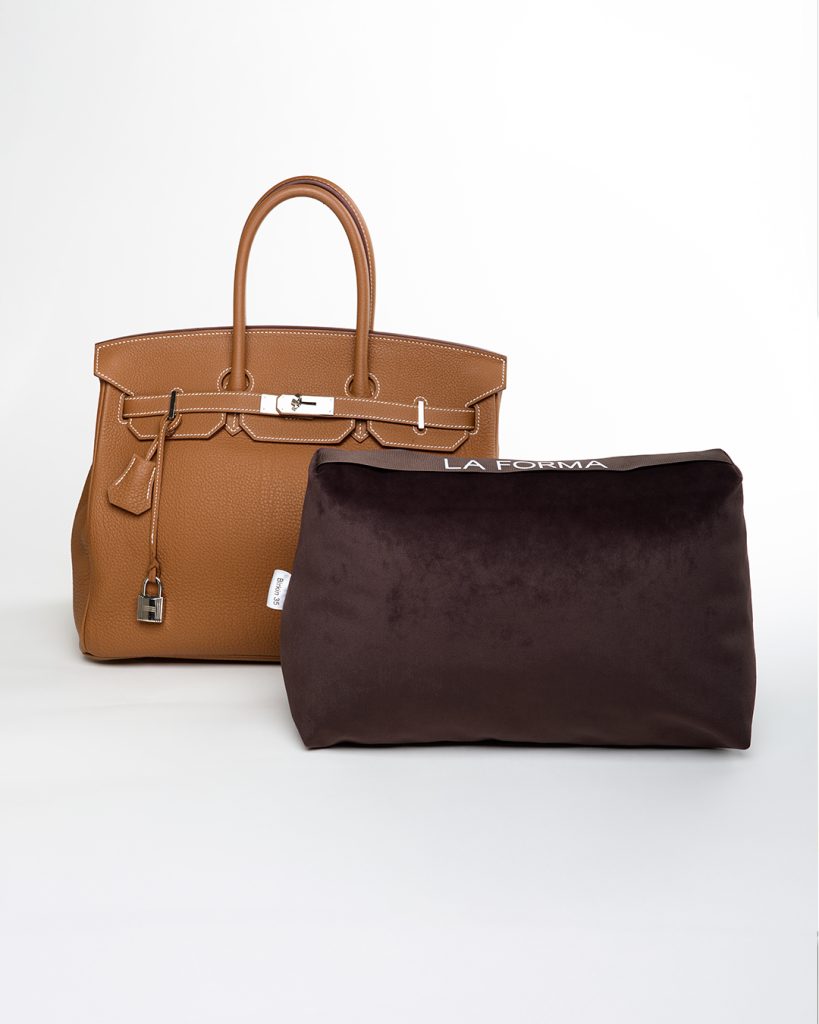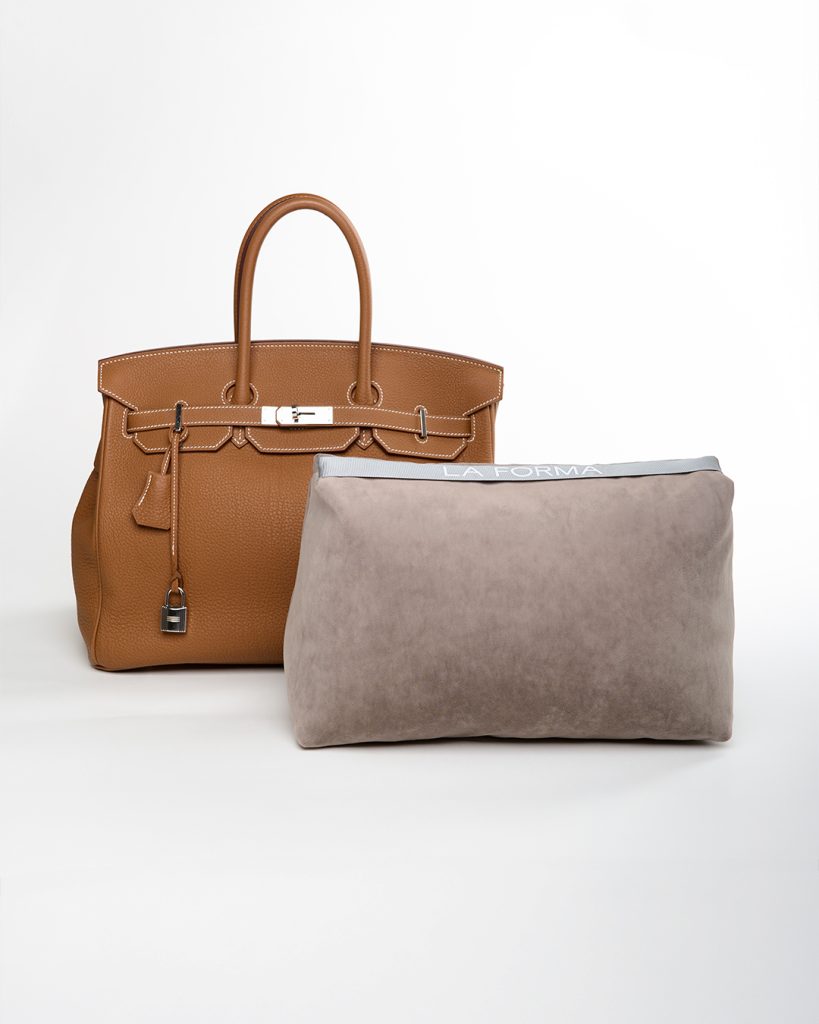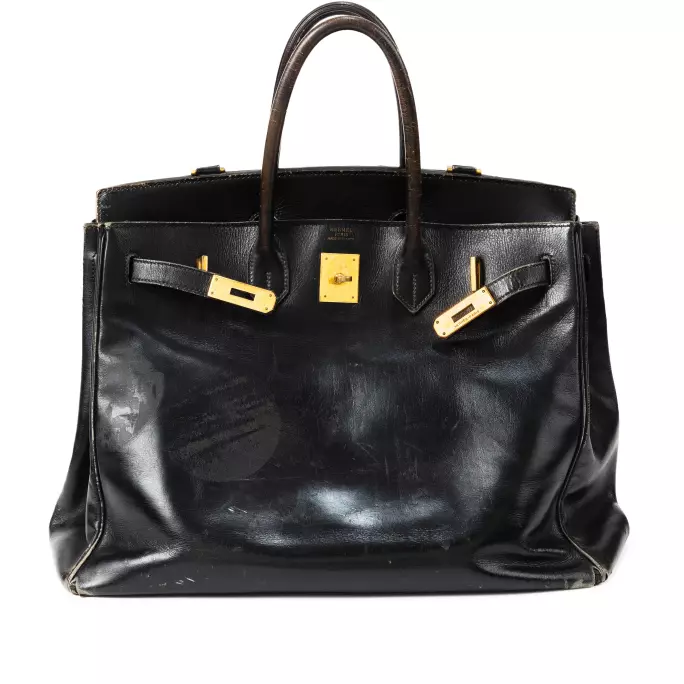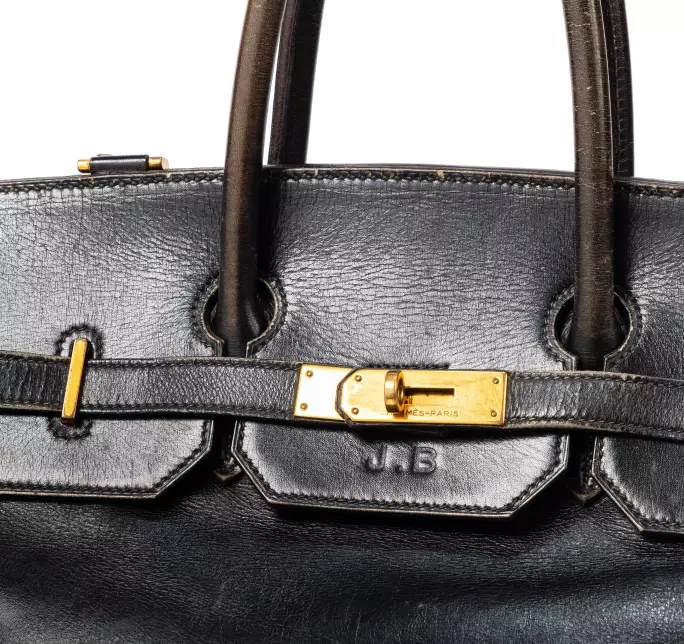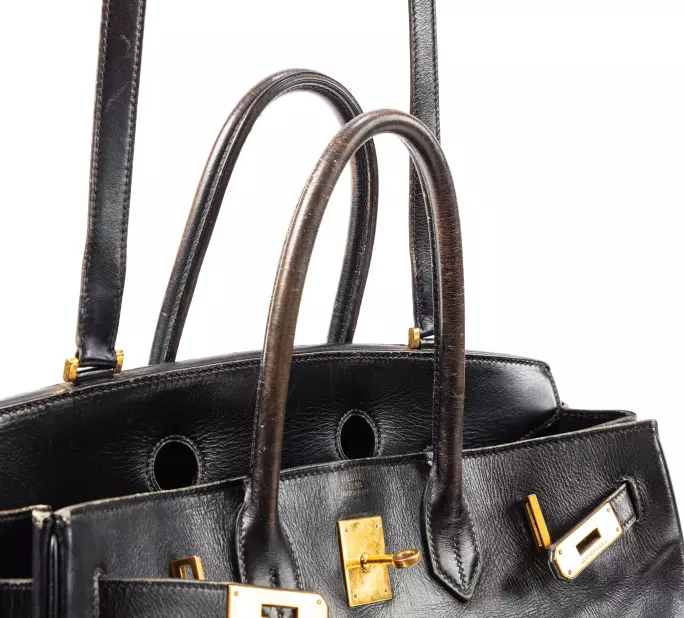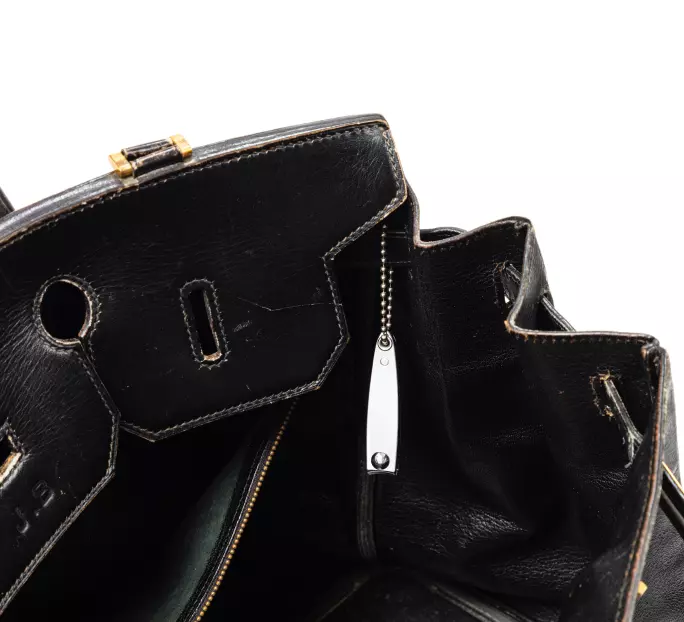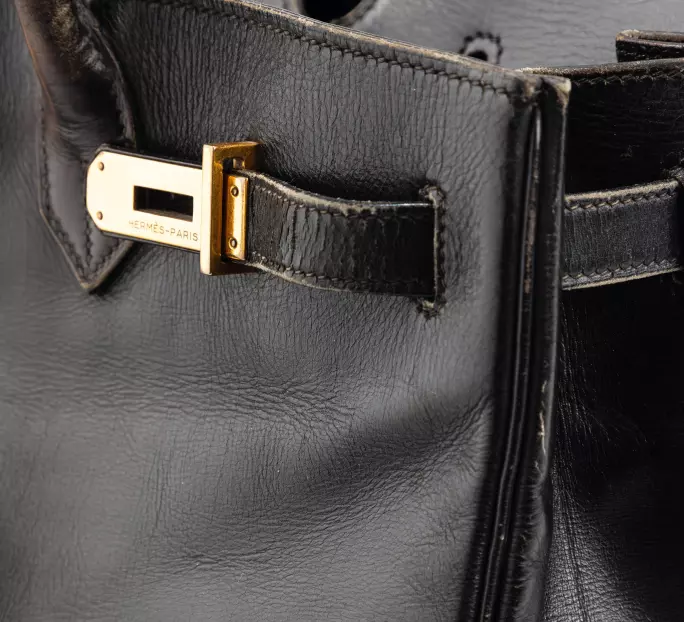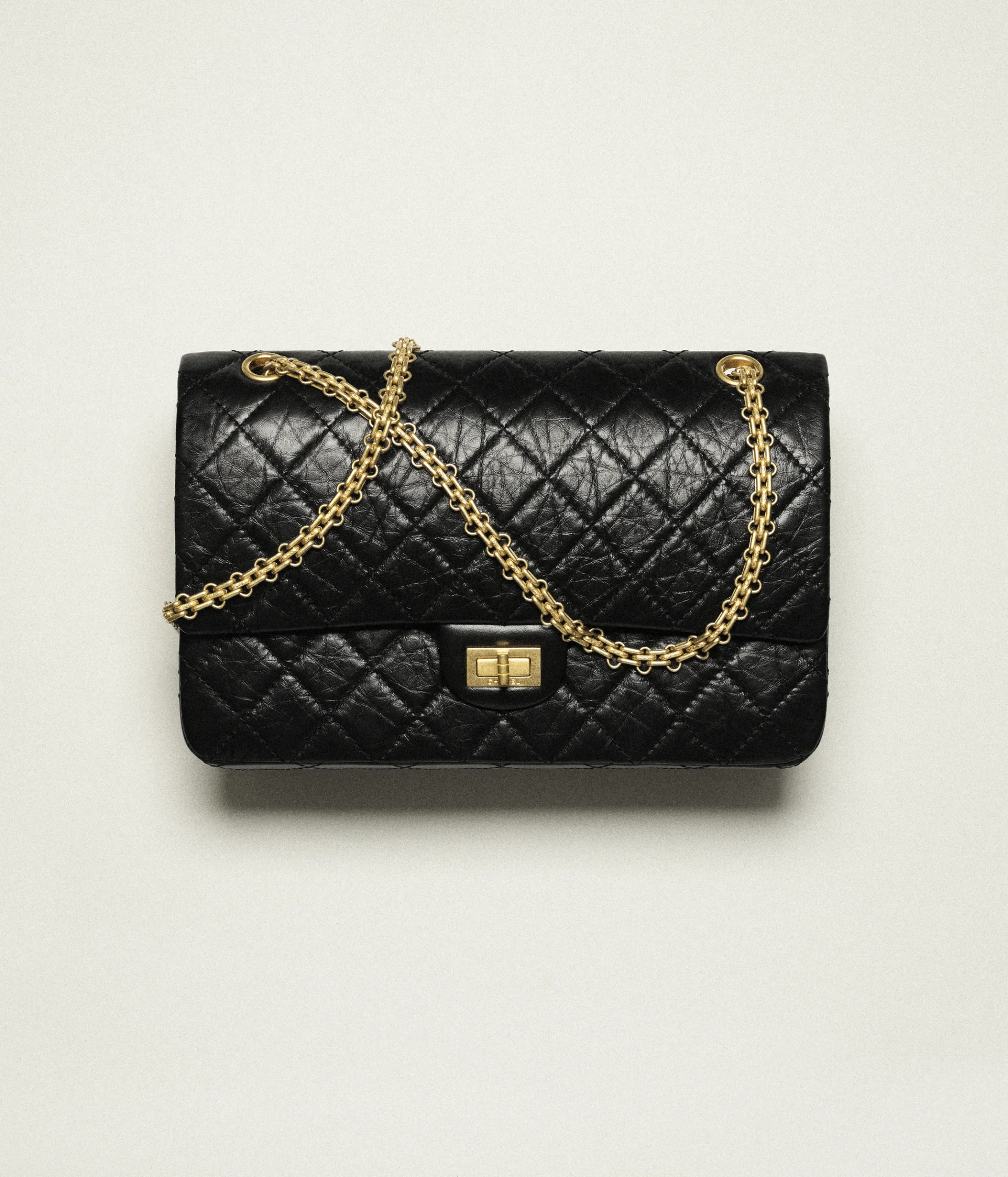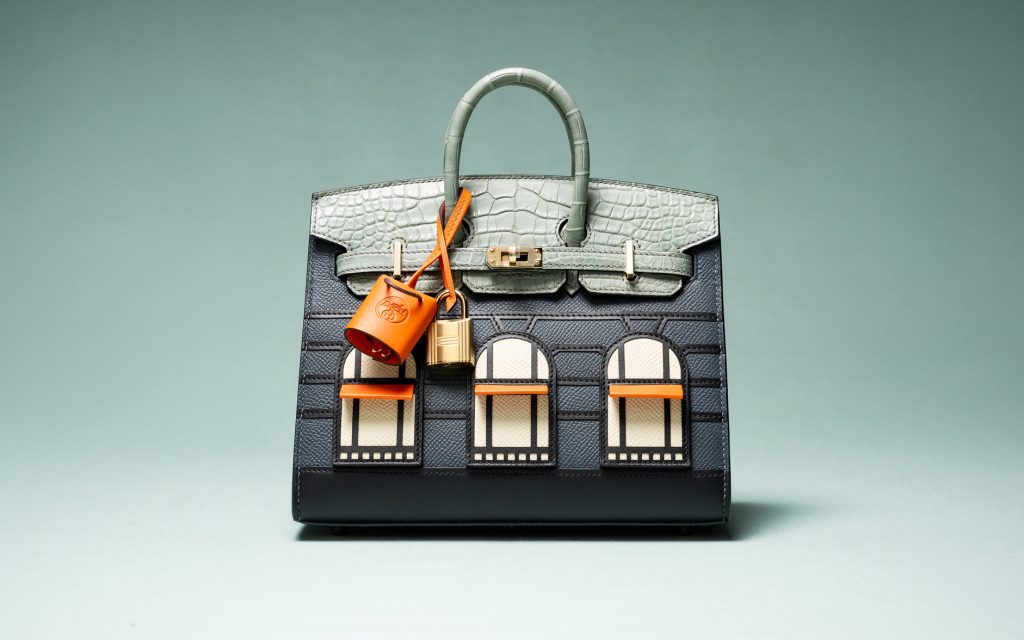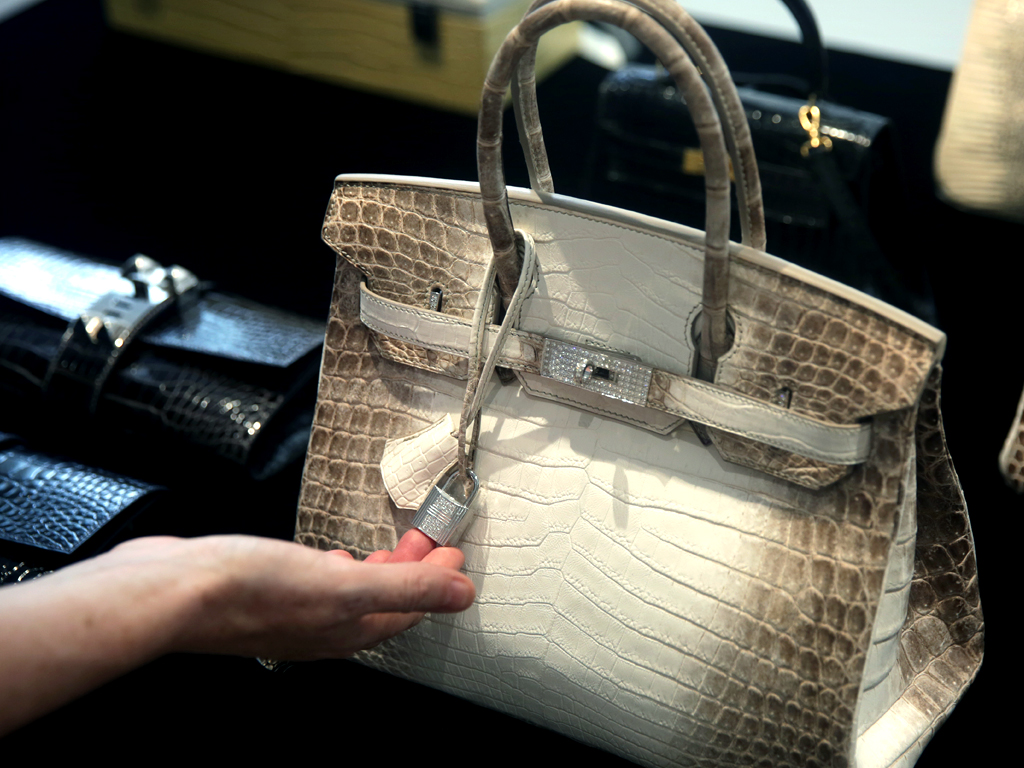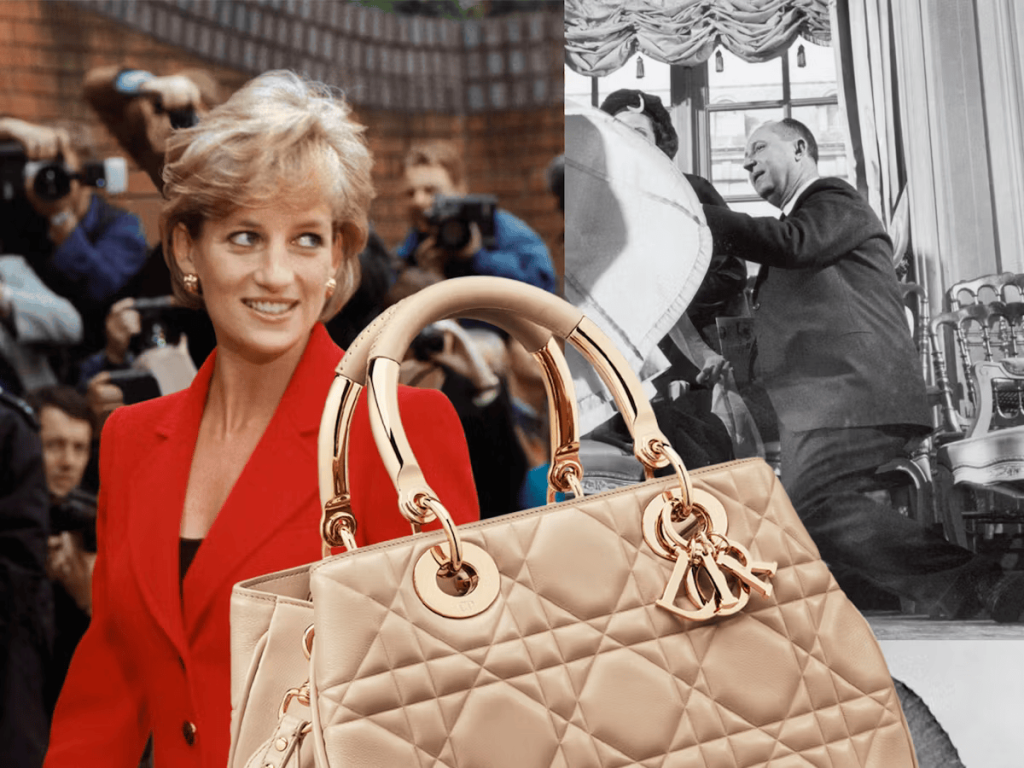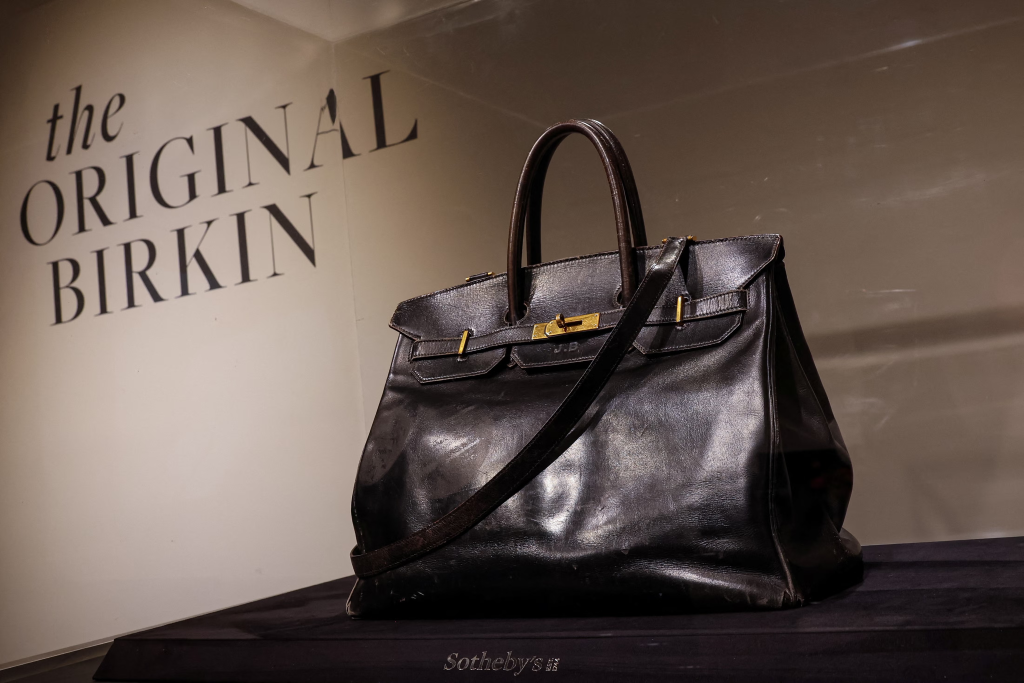Hermès Birkin guide: From its origins in 1984 to today’s most coveted limited editions, this comprehensive guide walks you through the handbag’s history, craftsmanship secrets, material variations, and why a Birkin remains one of the world’s most prized investments.
Chapter 1: Origin story
The Birkin’s unmistakable silhouette—a wide, flat bottom, flap enclosure, and handles—was born from an actor’s need, as a mother of three, for a spacious bag.
The Birkin bag was conceived in 1983 during a chance encounter between British actress and singer Jane Birkin, well-known for her musical partnership with Serge Gainsbourg, and Hermès CEO Jean-Louis Dumas, on an Air France flight from Paris to London. Jane had just been upgraded to business class, where she was seated next to Dumas, who was then Executive Chairman of Hermès (1978–2006).
She was famously known for carrying a wicker basket filled with her essentials, and during the flight, the contents of her straw bag spilled into the aisle, right in front of Dumas. What could have been a fashion faux pas quickly turned into a transformative moment. Frustrated, Jane lamented her struggle to find a suitable handbag, one both practical and elegant.
They struck up a conversation in which she told him she wanted a bag “half the size of my suitcase,” she later recounted to Amanpour.
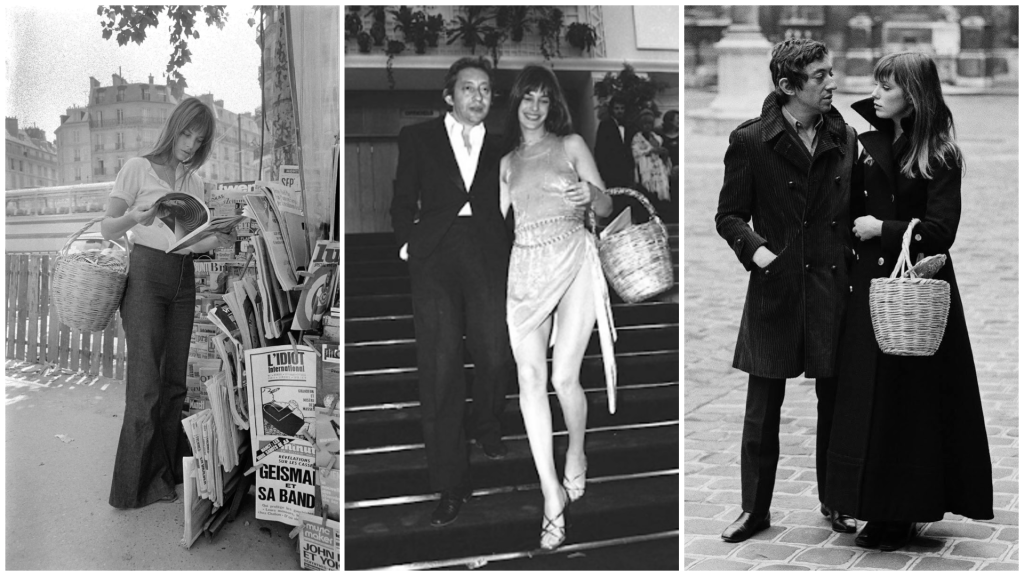
On the spot, Jean-Louis sketched a design on an airplane sick bag—the handiest bit of paper available. “He said, ‘Well, draw it for me,’ and so I drew it on one of those sick bags—the vomit bags—in the airplane,” Birkin recalled. This impromptu sketch marked the birth of the now-legendary Birkin bag.
After Hermès produced the prototype, Dumas offered to name the bag after her. Jane reportedly donated the royalties each year to charities.
In 1984, the Hermès Birkin bag was officially put into production, named after the actress who had inspired its design.
The original Birkin—the prototype gifted to Jane—had several unique characteristics that differed significantly from the models later sold by Hermès. Its uniqueness stemmed not only from its provenance, but also from seven distinctive design elements that were never replicated together again, according to Sotheby’s handbag specialists.
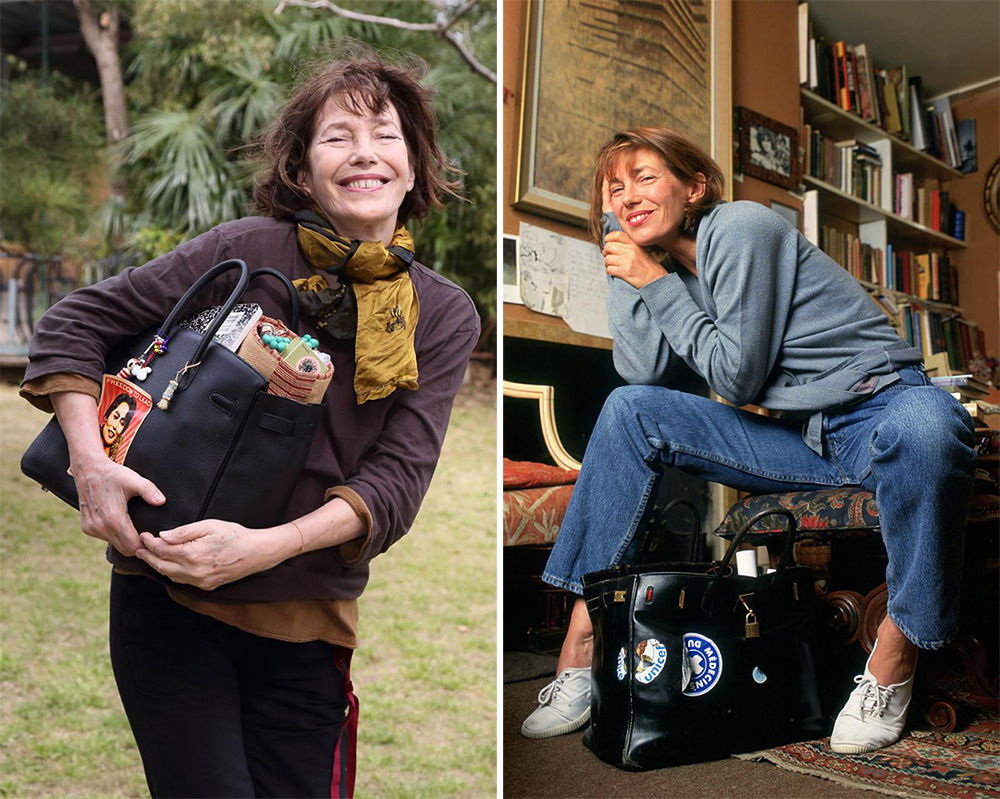
Throughout her life, Jane received four additional Birkin bags from Hermès, but none exactly matched the original. She kept that first bag for nearly ten years, using it frequently and casually, before ultimately donating it to a charity auction.
In October 1994, she donated her original Birkin to support the Association Solidarité Sida, a leading AIDS charity organization in France. It was auctioned at Poulain Le Fur in May 2000 and has remained in private hands ever since.
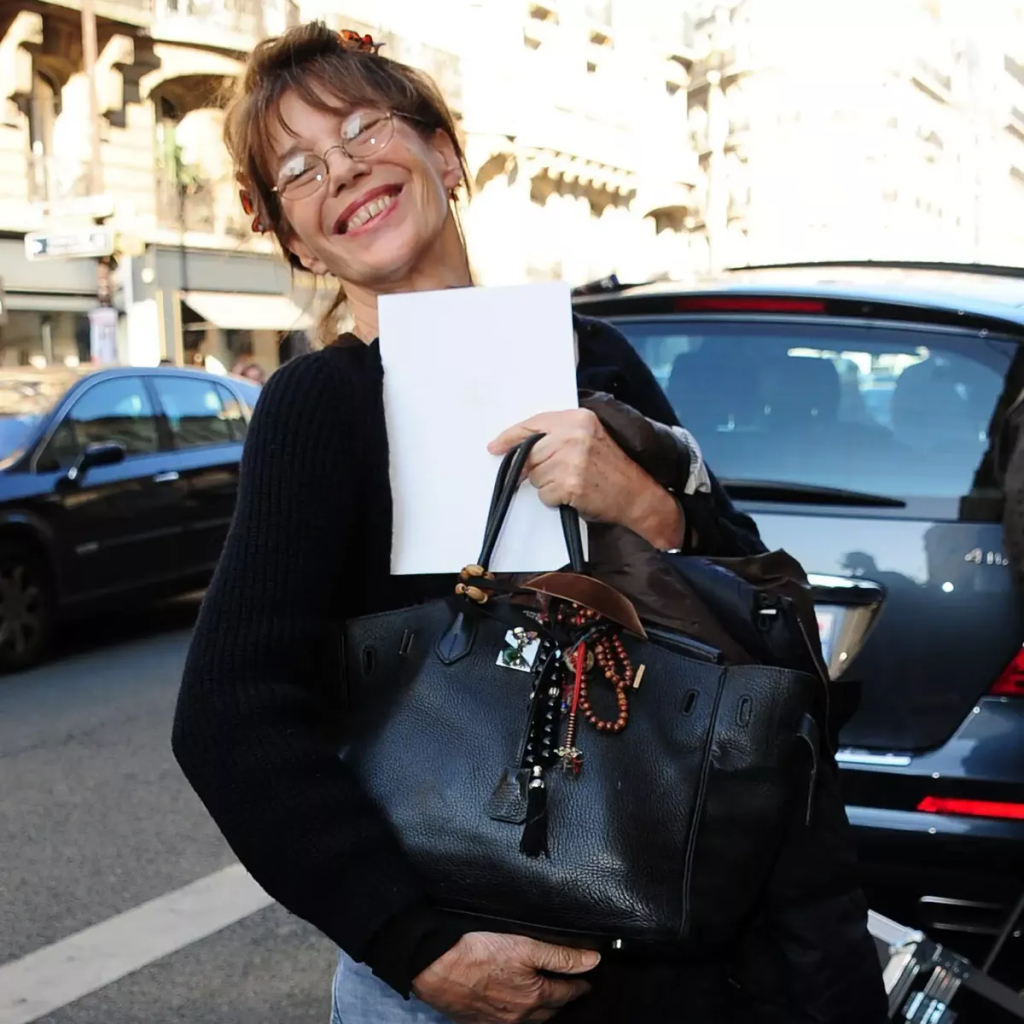
In a 2020 interview with CNN’s Christiane Amanpour, Jane reflected on the bag’s overwhelming fame, wondering whether it might—more than her films or iconic song “Je T’aime… Moi Non Plus”—become the thing she was most remembered for.
“Bless me, when I’m dead… (people) will possibly only talk about the bag,” she joked.
Here are 7 secret details you should know about Jane Birkin’s original Birkin.
Chapter 2: Price and exclusivity
Acquiring a Birkin is challenging not merely due to its price—which ranges from $12,700 to $450,000—but also due to Hermès’ stringent purchasing requirements. Prospective buyers often need a substantial purchasing history or personal connections with boutique staff.
On average, leather Birkin bag prices in 2025 are now 6–7 % higher than in 2024.
The price of a Birkin bag varies based on size, material, and rarity:
| Style | Price (€) |
| Birkin 25 Togo | 8,950 |
| Birkin 30 Togo | 9,800 |
| Birkin 35 Togo | 10,600 |
| Birkin 25 Epsom | 8,950 |
| Birkin 25 Box | 11,000-12,000 |
| Birkin 25 Shadow Swift | 9,500-10,500 |
- Exotic Skin Birkins: Ranging from $40,000 to over $200,000.
- Limited Editions: The Himalaya Birkin with diamond hardware has fetched up to $450,000 at auction. To date, the most expensive Birkin bag publicly sold was via a Sotheby’s auction in 2022.
Chapter 3: Craftsmanship and production
The Birkin bag is renowned for its meticulous craftsmanship. Each Birkin is entirely handcrafted by a single artisan, from beginning to end, in Hermès’ ateliers in France, a process that can take up to 18 hours.
Hermès artisans typically undergo four to five years of training before crafting their first Birkin, underscoring the precision and mastery involved.
Each bag carries a unique stamp identifying the artisan, the workshop, and the year of creation.
Detailed Production Process: The production of a Birkin involves multiple steps and around 18 to 48 hours of manual labor, typically spread over several days to weeks. Steps include:
- Leather Inspection: Leather is carefully checked for defects and quality.
- Cutting: Artisan precisely cuts the leather according to templates.
- Stitching: Every stitch is handmade using the signature saddle stitching method. Hermès artisans use two needles simultaneously to ensure durability and strength.
- Edge Finishing: Edges are smoothed, painted, polished, and waxed to ensure longevity and refined aesthetics.
- Hardware Installation: Precious metal hardware (often palladium or gold-plated) is meticulously installed and polished.
- Final Assembly: Bag components are carefully assembled, ensuring symmetry and structural integrity.
- Quality Control: Rigorous inspections at each step ensure absolute perfection.
Artisan Training and Certification: Hermès artisans undergo intensive training that can last several years before being certified to craft Birkin bags. Only after mastering every aspect of craftsmanship, precision stitching, leather manipulation, and quality standards are artisans allowed to independently create Birkins.
Chapter 4: Sizes and functionality
Birkin bags come in six primary sizes:
Birkin 20: Currently produced exclusively as the Limited Edition Birkin Faubourg.
Functionality: Primarily a collector’s piece or a petite evening accessory, ideal for minimal essentials like a phone, cards, keys, and small cosmetics.
Birkin 25: A popular, versatile option for everyday use.
Functionality: Comfortably fits daily essentials such as wallet, phone, small makeup pouch, keys, and sunglasses, while maintaining a compact and elegant profile.
Birkin 30: Considered the ideal all-around daily handbag.
Functionality: Offers sufficient space for daily necessities along with larger items like a tablet or small book, suitable for both casual and professional contexts.
Birkin 35: Originally the size Jane Birkin herself favored; a practical and classic choice.
Functionality: Roomy enough to accommodate larger personal items such as a small laptop or documents, making it an excellent option for work and professional settings.
Birkin 40: The largest of the standard Birkin range.
Functionality: Often used as a spacious travel or weekend bag, providing ample storage space for personal items, small electronics, toiletries, and even clothing for short trips.
Birkin 50: The extra-large variant, available by special order.
Functionality: Designed for extended travel or as a true weekender, capable of holding larger items such as clothing changes, shoes, a toiletry kit, and multiple electronic devices.
Each size indicates its base length in centimeters. All Birkins have one interior side pocket, and the rest of the bag is a single compartment. The bottom base maintains its shape and doesn’t buckle even after years of use.
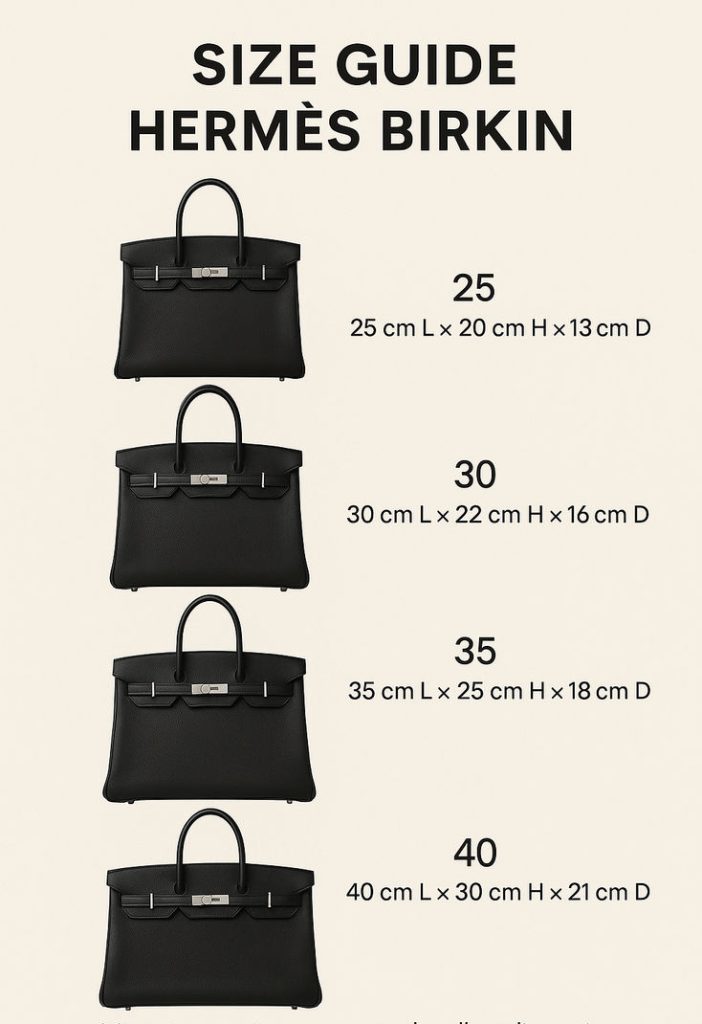
Chapter 5: Classic materials
The Birkin has been reinvented many times since its introduction in 1984 using various leathers, exotic skins, and limited editions. Initially, the bag appeared in calfbox leather, the oldest leather used by Hermès. This leather has an extremely smooth finish that gives Birkins an extra glamorous look. It is susceptible to scratches and watermarks, but over time these imperfections blend into the surface, creating a mirror-like texture. To ensure your calfbox Birkin remains in good shape, keep it away from rain and lightly buff any imperfections.
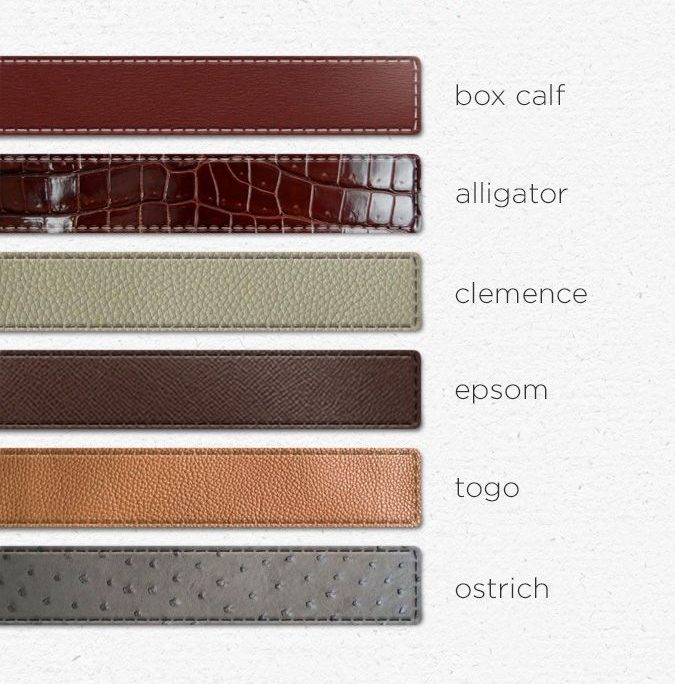
Togo leather, introduced in 1997, is the most popular classic option. Named after the Togolese Republic, this supple, matte leather becomes shinier and softer with time, featuring pronounced veins and wrinkles, and is scratch resistant.
Another standard leather is Clemence,made from cowhide. It is softer, heavier, and less durable than Togo and tends to lose its shape over time. It has a shallow grainy texture that creates a matte effect and gives the bag a more casual feel.
Epsom leather, on the other hand, is rigid and holds its shape for years. As an embossed leather with no natural grain, Epsom is scratch- and water-resistant, making it easy to clean and very practical.
Fjord leather is also highly durable and waterproof. It’s soft, matte, and heavy. Evercolor leather, introduced in 2012, offers suppleness and comes in a wide palette of “forever” colors. It has a satiny finish with a small, regular printed grain.
Barenia Faubourg calfskin, introduced in 2016, is a newer heritage leather with a minuscule printed grain and a waxy feel. It darkens where handled.
On the secondary market, you can find Birkin bags in nearly every color imaginable. Hermès itself only releases certain colors each year, allowing each bag to reflect the personality of its wearer.
Chapter 6: Exotic materials
Birkin handbags also come in exotic materials such as ostrich, lizard, crocodile, and alligator skins, available in glossy or matte finishes. Birkins made from exotics are considered more exclusive and unique than leather Birkins and fetch a higher price point.
Crocodile is the most expensive exotic material and comes in two styles: Niloticus crocodile and Porosus crocodile. Niloticus crocodile handbags bear the symbol “••” next to the Hermès logo stamp, while Porosus crocodile handbags are marked with the symbol “^”.
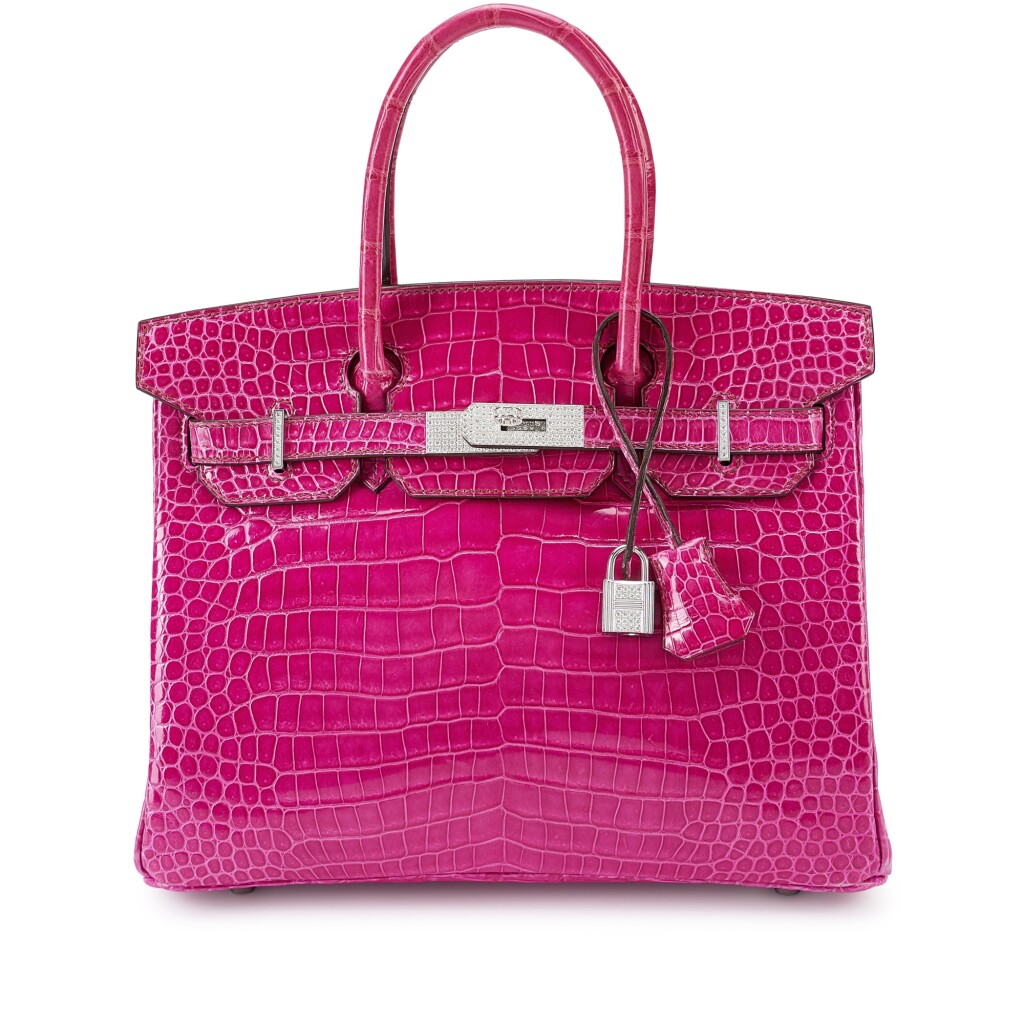
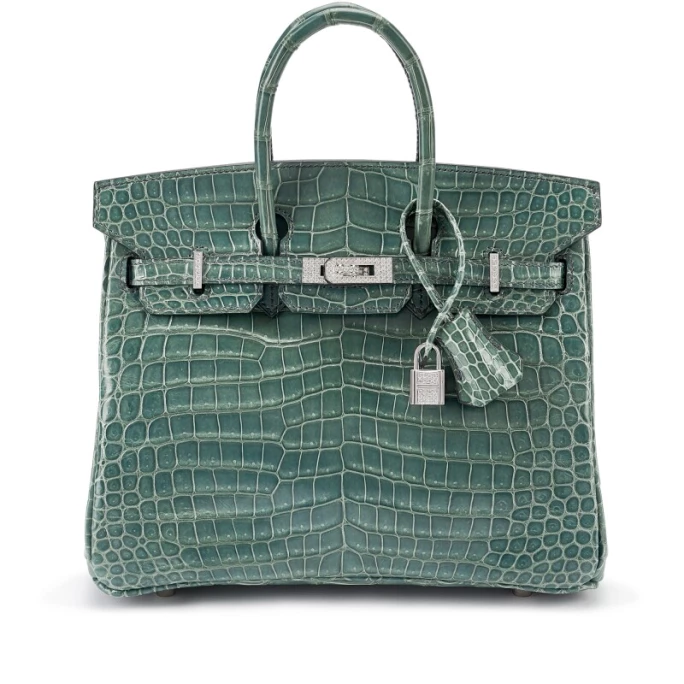
The most expensive Hermès Birkin—the Himalaya Birkin—is constructed from Niloticus crocodile skin dyed in a white-to-grey gradient, meant to evoke the snow of the Himalaya Mountains.
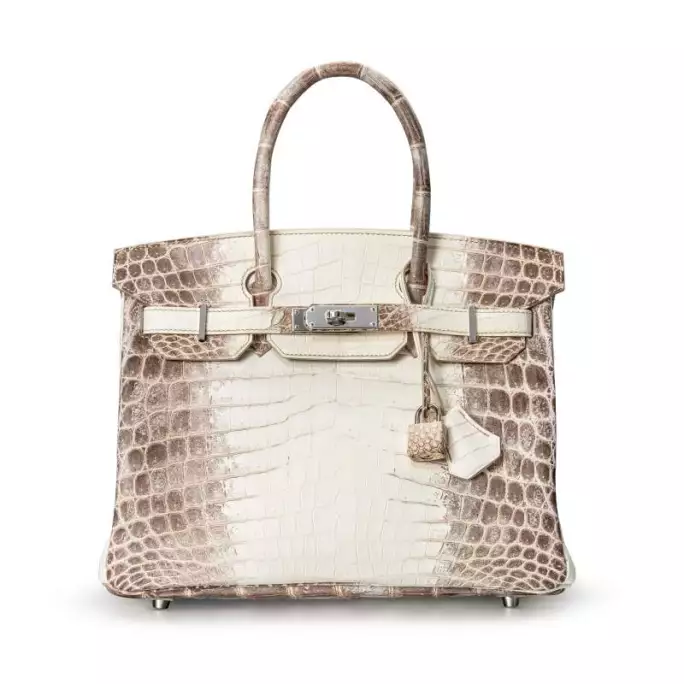
Alligator skins are the next most expensive exotic material. They differ from crocodile in that the scales are larger, non-uniform, softer to the touch, and poreless. Alligator skin is indicated by a small square adjacent to the Hermès logo stamp.
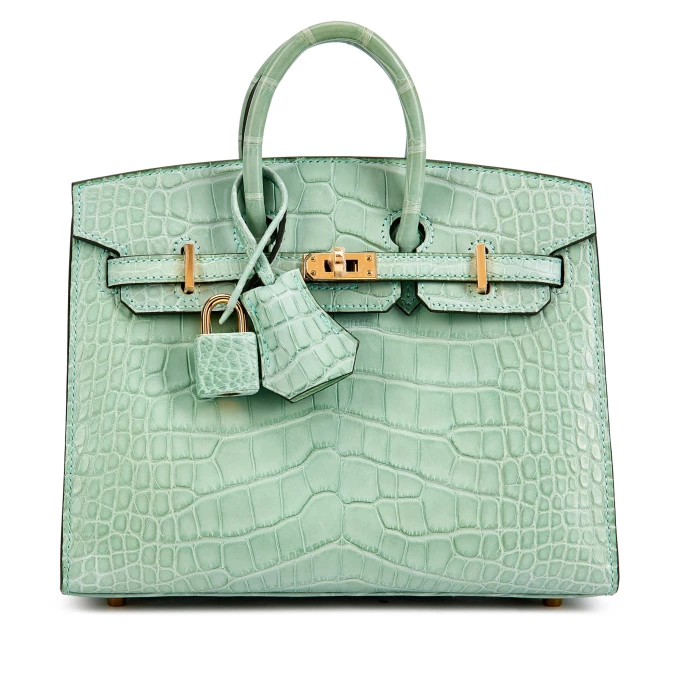
Lizard skin is generally used only for smaller bags and small leather goods. As a result, Hermès typically uses it for the smallest Birkin size—Birkin 25. Lizard absorbs pigments well, offering vibrant colors. Like crocodile, this skin comes in two types: Niloticus lizard, marked with a “–”, and Varanus Salvator lizard, marked with a “=” symbol.
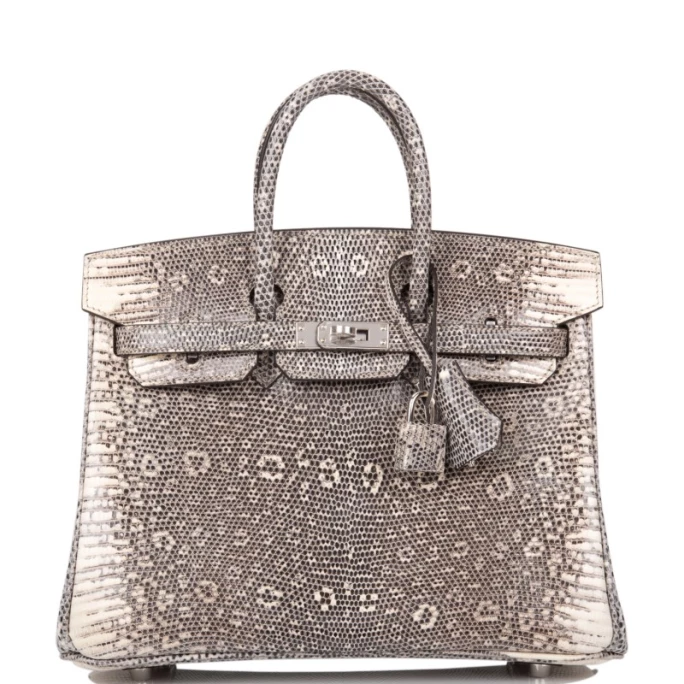
Among all exotic materials, ostrich is the most durable and has the most accessible price point. Used by Hermès since the 1920s, ostrich skin is easily recognizable by its follicles—the spots where feathers once grew—which create a distinctive dual-tone appearance. To prevent damage, Hermès flattens and triples the skin. Ostrich absorbs oils and darkens over time where touched frequently. It is available in vivid colorways and does not carry a special symbol.
Chapter 7: Hardware options
TThe Hermès Birkin is distinguished not only by its exquisite leathers but also by a remarkable spectrum of hardware finishes. The hardware includes the front lock closure, the padlock and keys, the zipper, and the metal feet called clou, which help the Birkin sit upright.
Classics:
1. Gold Hardware (GHW) – 18–24K gold plating, offering a warm, timeless glow. Ideal for any leather color, it enhances neutral tones and highlights chromatic contrasts.
2. Palladium (Silver) Hardware (PHW) – A 1 µm silver layer followed by 2 µm of palladium, creating a cool, bluish hue that is extremely wear-resistant. Favored for limited-edition Birkin and Kelly models.
Rare / Special:
3. Brushed Gold Hardware (BGHW) – Matte gold with a satin finish that softens the shine for a modern, understated look. Rare customizations, available by special order only.
4. Brushed Palladium Hardware (BPHW) – Palladium with a matte finish—contemporary and sophisticated—used mainly for one-off bespoke orders.
5. Permabrass Hardware (PBHW) – A blend of gold and palladium with a champagne tone. Shines brilliantly on darker blue or green leathers. Available exclusively via custom order.
6. Rose Gold Hardware (RGHW) – An alloy of gold, copper, and sometimes silver, providing a warm rose-copper hue. Common on Constance models, but available on Birkin upon request.
7. Guilloché – Palladium engraved with a fine “diamond” pattern, offering a unique, durable, and highly sophisticated textured effect.
8. Ruthenium Hardware (RHW) – A rare, gunmetal-type metal with a dark gray, almost black color. Primarily used on batches from 2004–2007 and highly prized by collectors.
9. PVD (Physical Vapor Deposition) – Limited-edition glossy black coating from the Jean-Paul Gaultier “So Black” collection. The hardware appears nearly absolute black.
10. Electrum hardware – Artfully combines gold-plated touret and rivet crowns with palladium-plated front plates, straps, lock, clochette, V-hook, and buckle elements, creating a balanced two-tone contrast that complements virtually any Birkin color.
11. Diamond-Encrusted Hardware – 18K white gold plating set with approximately 10 carats of VVS-clarity diamonds (and about 80 g of gold) on certain exotic skins (e.g., the Himalaya Birkin). The most spectacular and exclusive finish.
These options span the entire Hermès Birkin hardware palette, from classic finishes to ultra-rare customizations. To select the metal that best complements your style, we recommend comparing them in person under different lighting to observe how they interact with the leather’s hue.
Chapter 8: Notable editions
Hermès limited-edition Birkins are the rarest because of their restricted release. These editions are often treated as sculptural artworks to be collected and cherished.
Himalaya Birkin: Crafted from Niloticus crocodile skin, dyed to resemble the snow-capped Himalayan mountains. It holds auction record prices.

Shadow Birkin: Designed by Jean Paul Gaultier and first introduced in 2009, then re-released in limited quantities ten years later. The Shadow Birkin features a trompe l’oeil effect—its lock closure is sewn as a leather debossing without metal hardware, creating the illusion of dangling buckle straps.
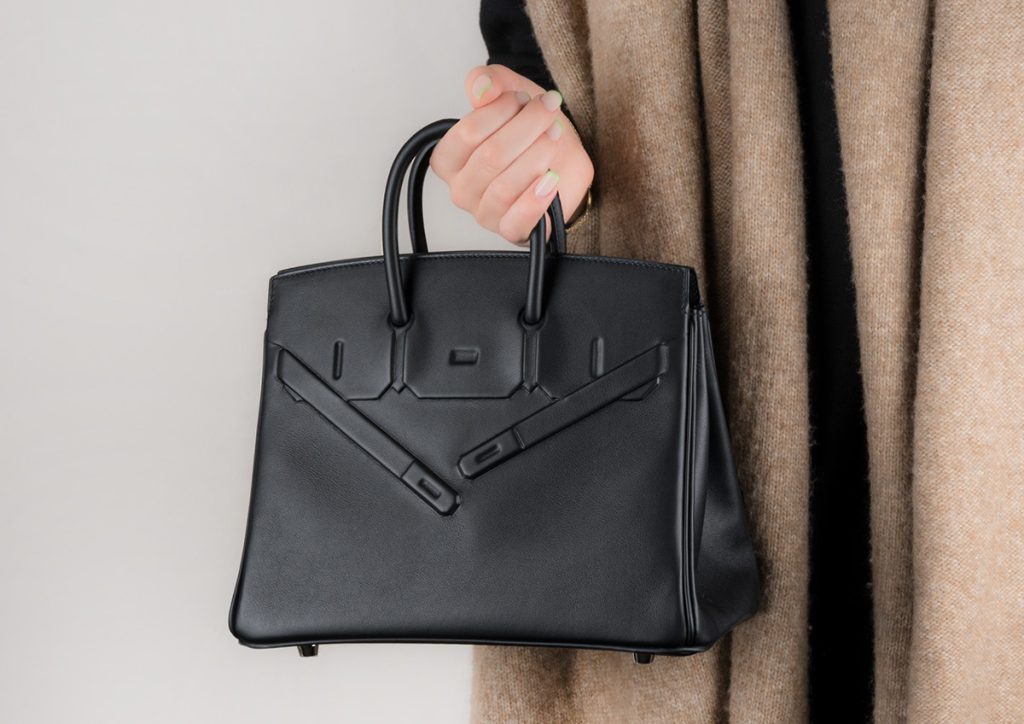
Faubourg Birkin: One of the most coveted limited editions, this 20 cm Birkin is an homage to the Hermès storefront on Rue du Faubourg Saint-Honoré in Paris. It features three windows with orange awnings and an alligator top flap, and comes in four variations.
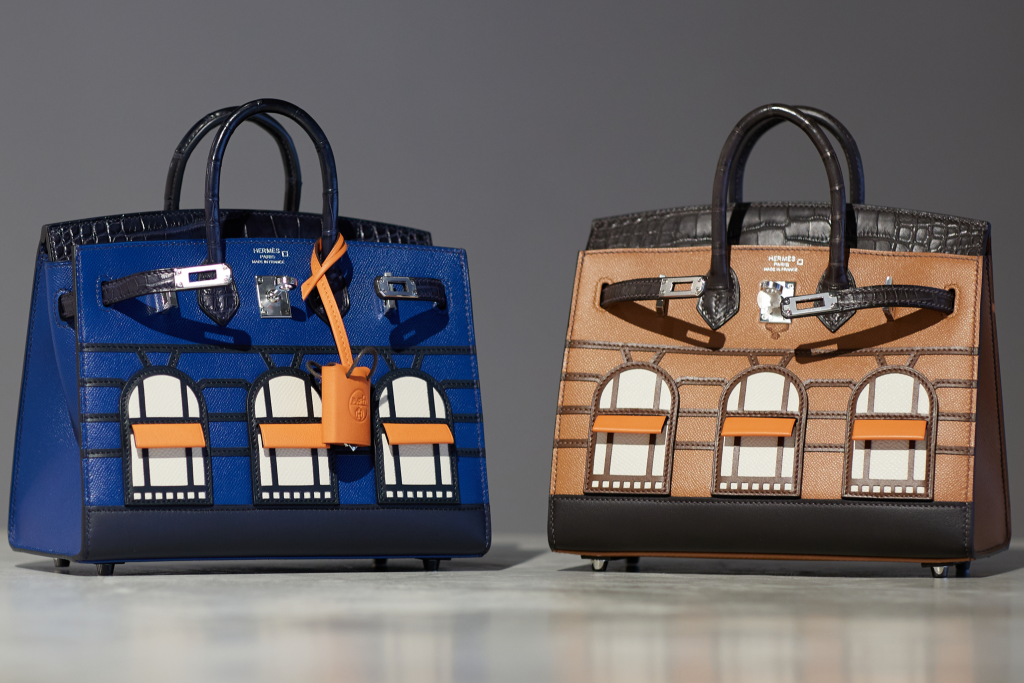
Diamond Birkin: The pinnacle of luxury. The 35 cm Diamond Birkin boasts 182 VVS F white round brilliant diamonds on the plaques, 7 diamonds on the touret, 16 on the pontets, and 40 on the Cadena lock—totaling 8.2 carats. All set in 10 grams of 18K white gold. Hermès has also produced a few Diamond Himalayan Birkins, with one 30 cm version selling for around $380,000 USD.

The Ghillies Birkin: Launched for Fall/Winter 2011, inspired by brogue shoe detailing. Initially made in Tadelakt leather in Fauve, Vert Veronese, and Rubis, the line later expanded to include materials like Toile Jean, Togo, Swift, and even full Porosus crocodile.
The Club Birkin: Released in 2012, this edition gave a sporty twist to the Birkin design with two lizard stripes flanking a center panel in leather or Ottoman de Crin (horsehair fabric). A bold use of color blocking and exotic accents.
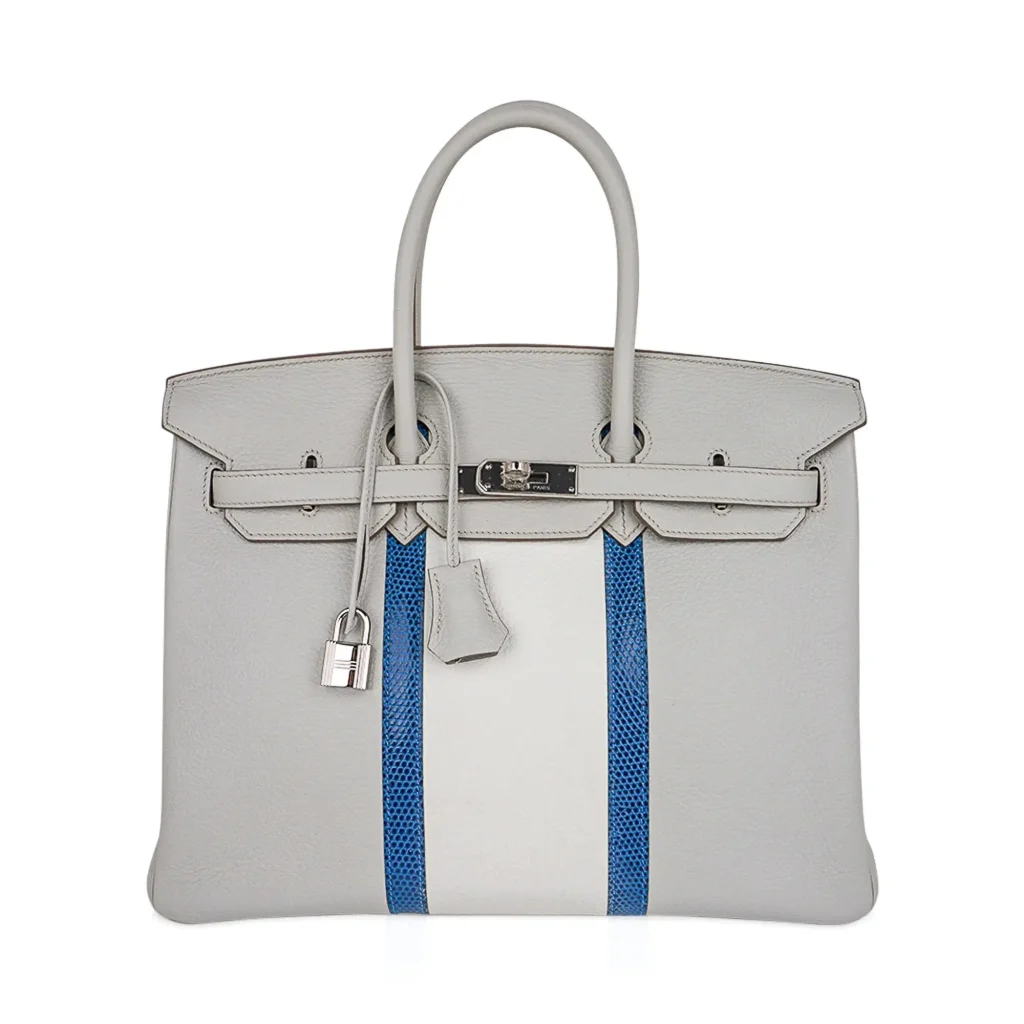
The Grand Mariage Birkin: Created in 2013, this edition is a blend of three exotic materials: lizard handles and sangles, ostrich Ghillies trim, and an alligator body, finished with Palladium or Permabrass hardware.
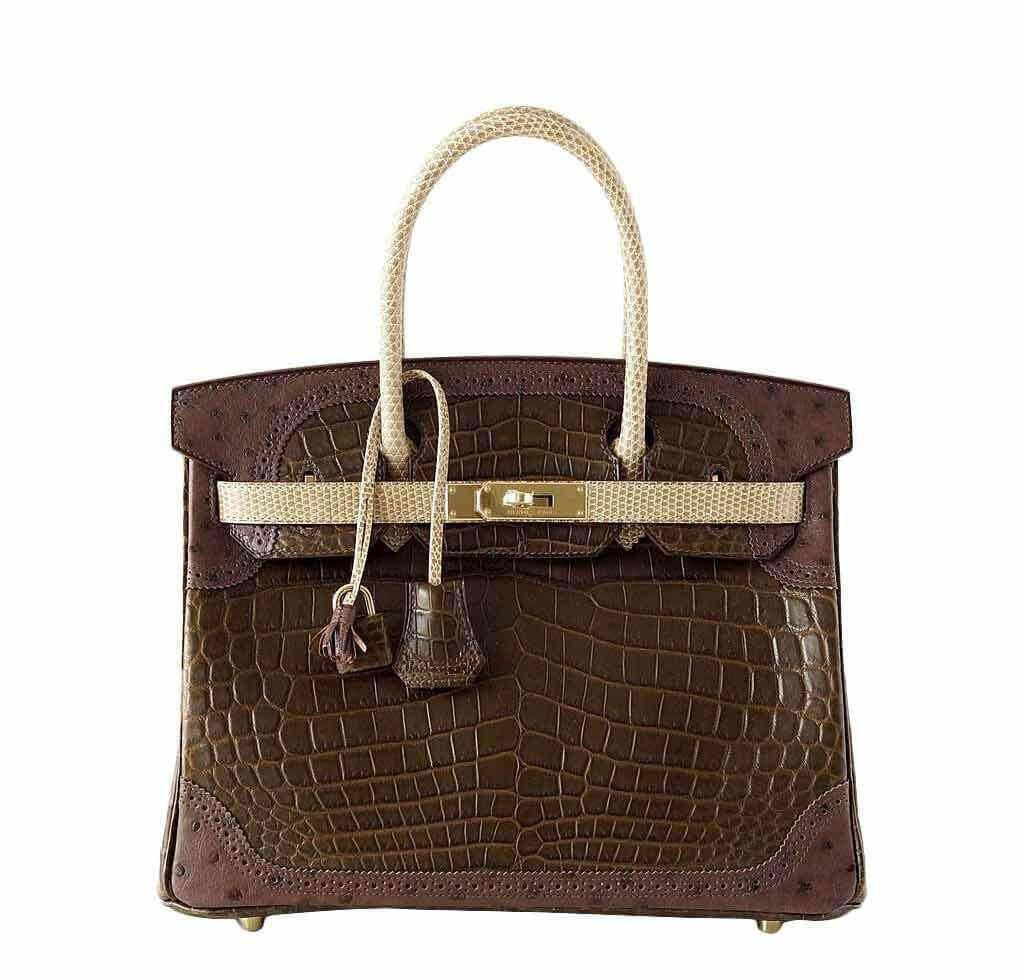
The Flag Birkin: Also from 2013, this design showcases Hermès’ historic canvas, drawing inspiration from maritime travel. The central stripe mimics vintage luggage tags used on transatlantic voyages.
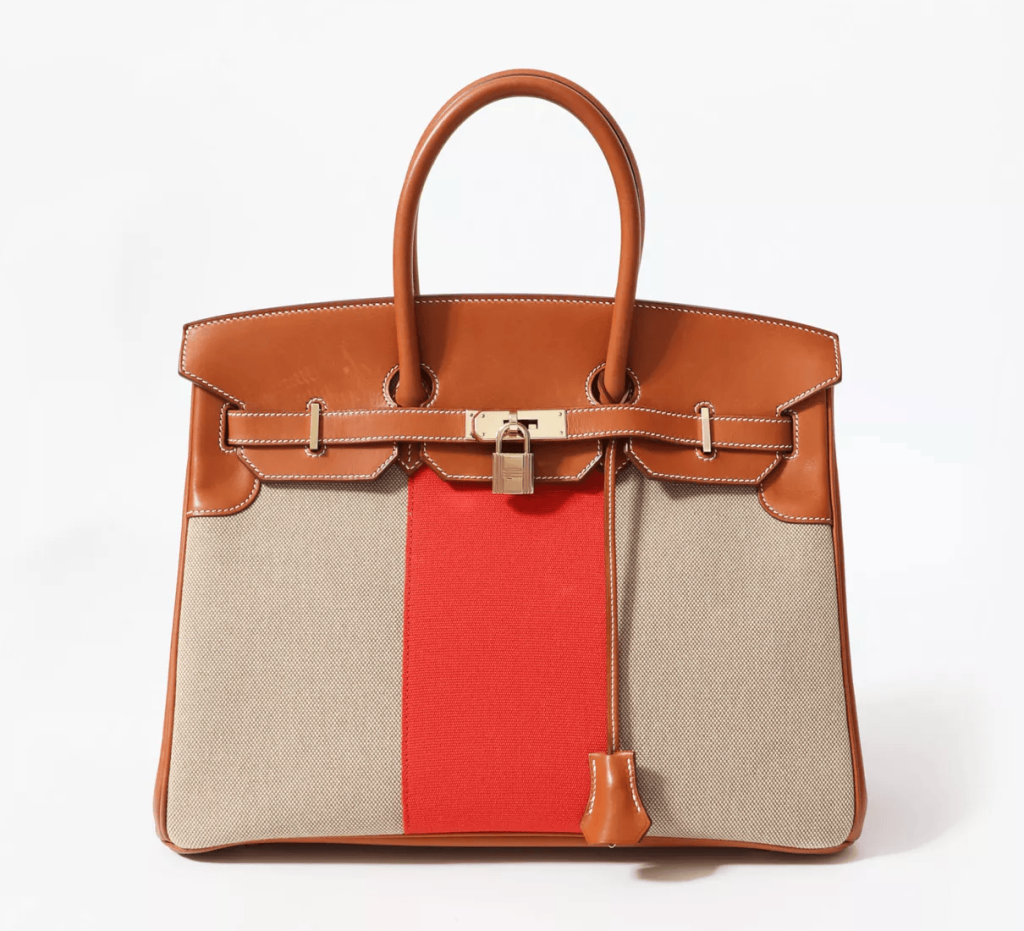
The Fringe Birkin: Among the most exclusive editions, these were custom client requests (marked with the Horseshoe Stamp) and feature a panel of leather fringe on the front—playful, bold, and rare.
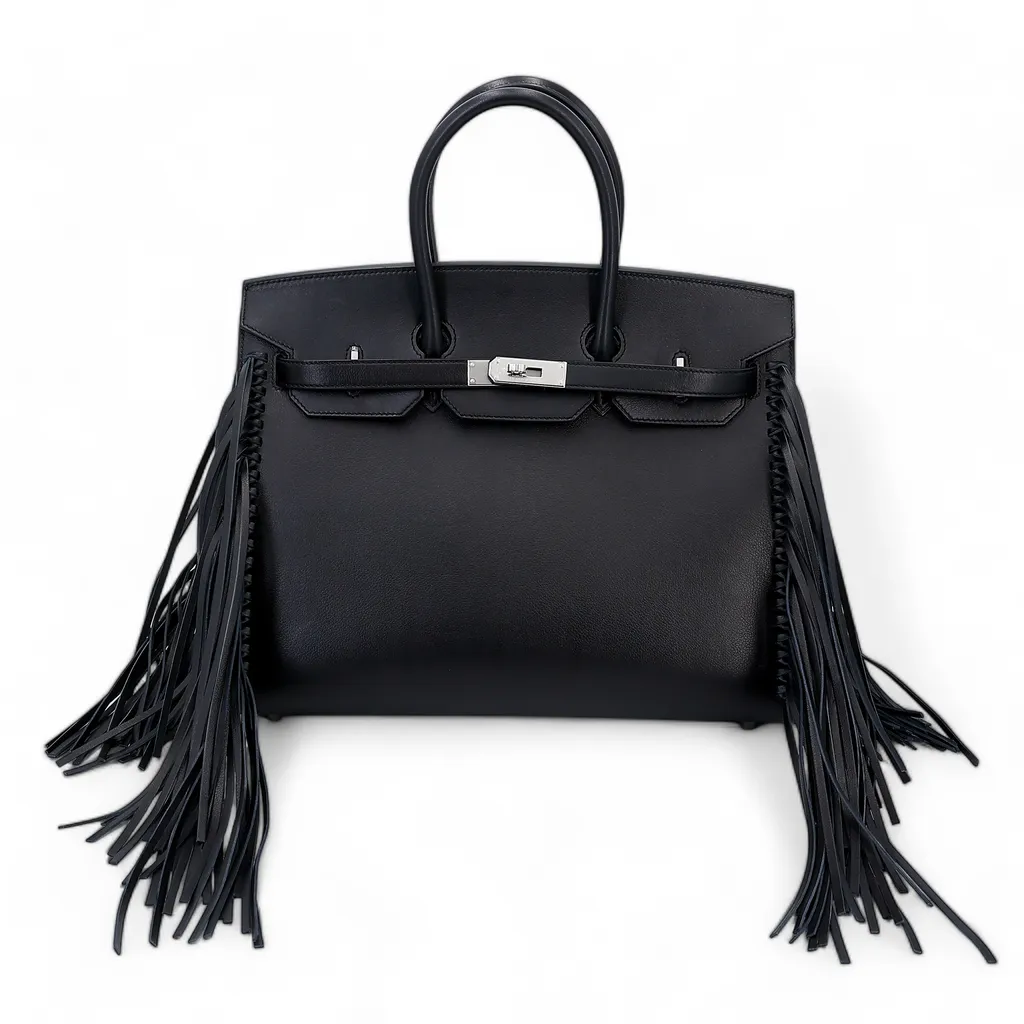
The Endless Road Birkin: Released in 2018, part of the menswear collection. Inspired by winding California roads, this HAC Birkin features intricate appliqué work—executed with exceptional craftsmanship.
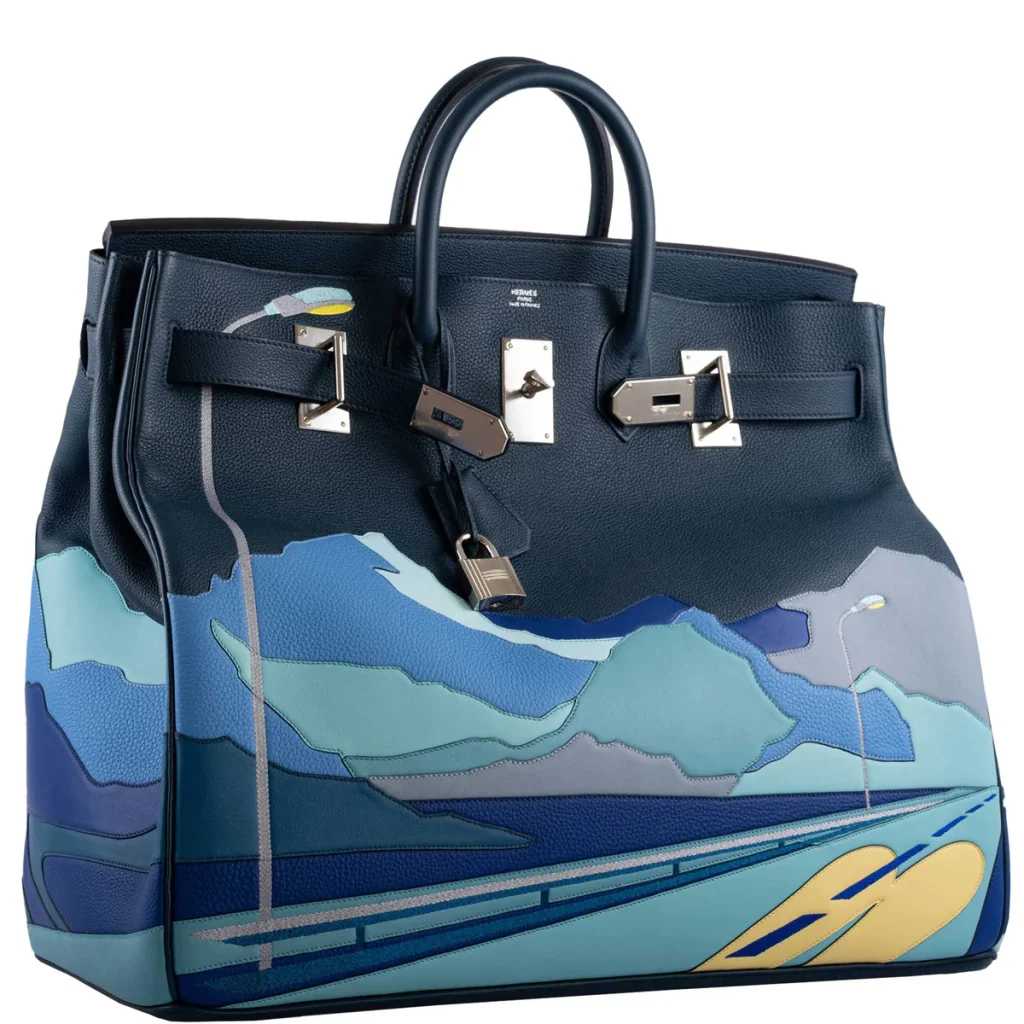
The Touch Birkin: First introduced in 2017, the Touch Birkin blends exotic skins with standard leathers. One version combined a Matte Vanille alligator body with Natural Sable Veau Butler leather handles. Later editions featured crocodile or alligator details on the handles, flap, and sangles, paired with Novillo leather bodies.
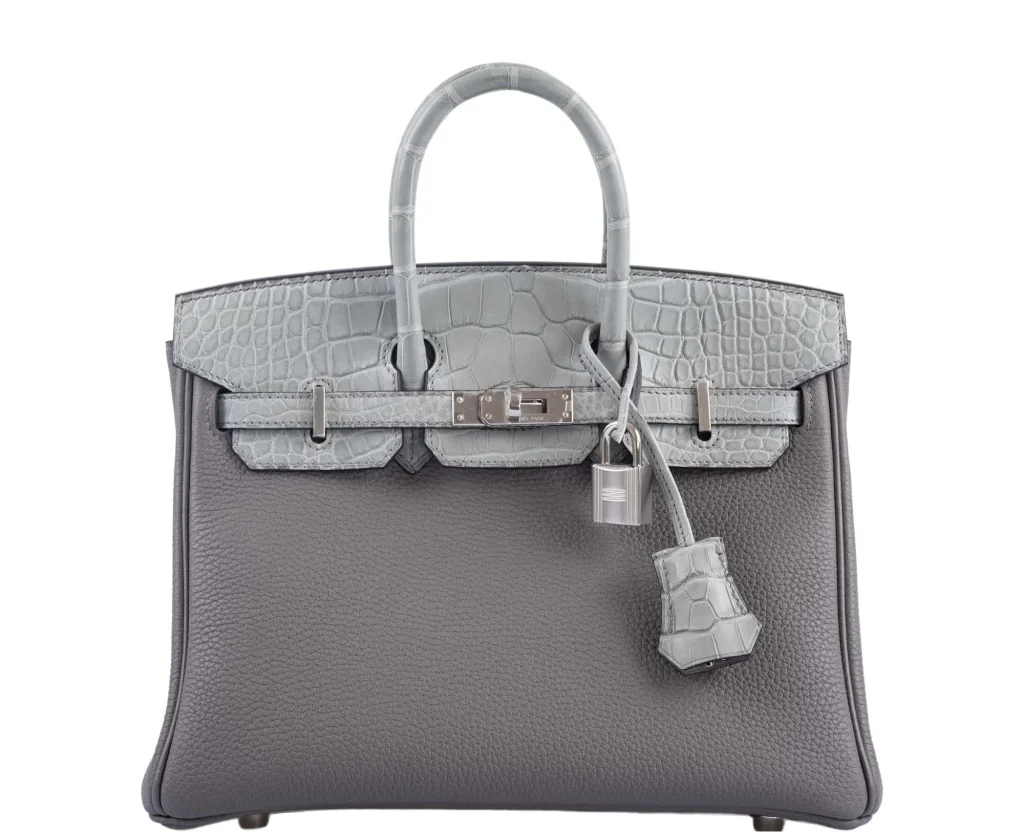
One Two Three and Away We Go Birkin: A 2018 collaboration with British artist Nigel Peake. This 25 cm Birkin in supple Swift leather features whimsical color and pattern—playful and highly collectible.
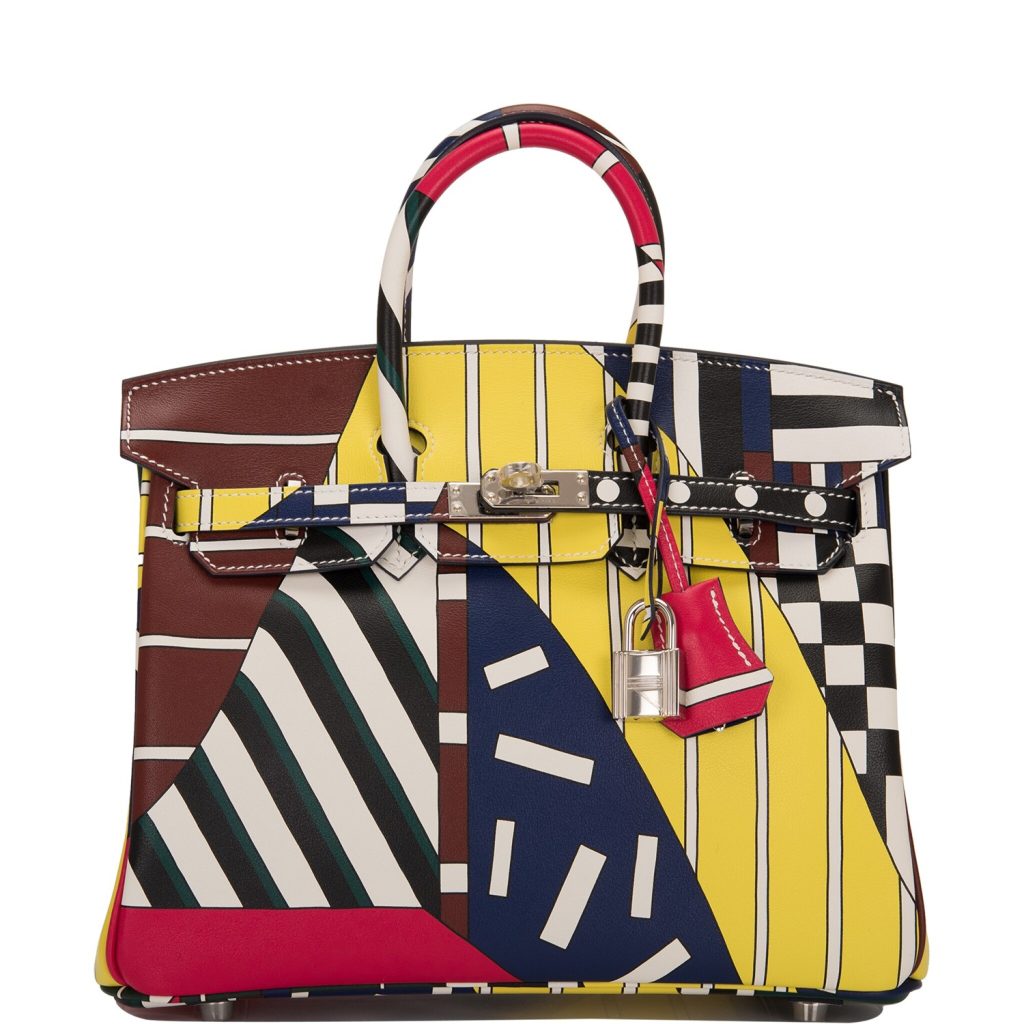
The Officier Birkin: Also launched in 2018, this edition subtly nods to military aesthetics with two Swift leather stripes running down the front—reminiscent of uniform insignia.
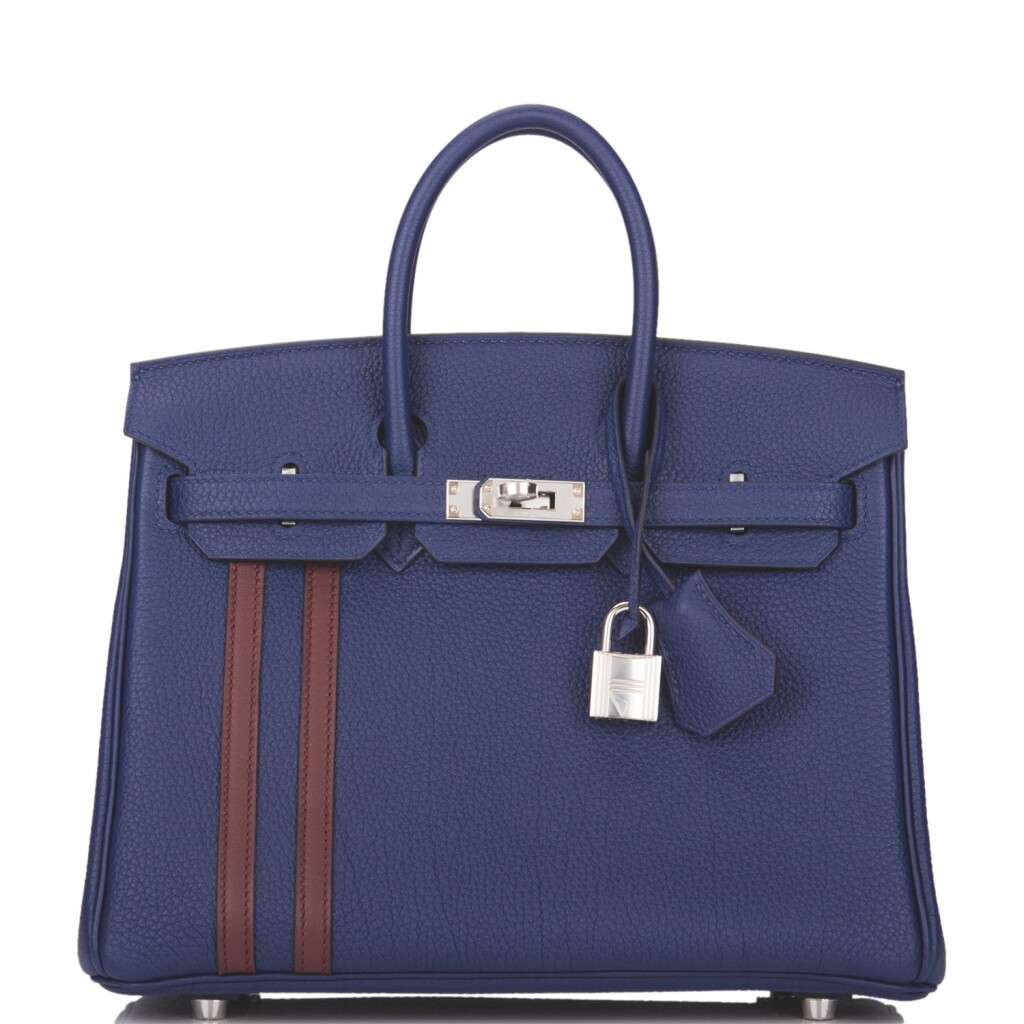
The Faubourg Tropical Birkin: The Birkin tells an epic story with flair: a design by the creative duo Octave Marsal and Théo de Gueltzl, embroidered in Lunéville stitch, plunges the emblematic Faubourg Saint-Honoré store into the heart of a luxuriant jungle. In an ultimate display of prowess, the design extends over the leather of the flap and the base of the bag.
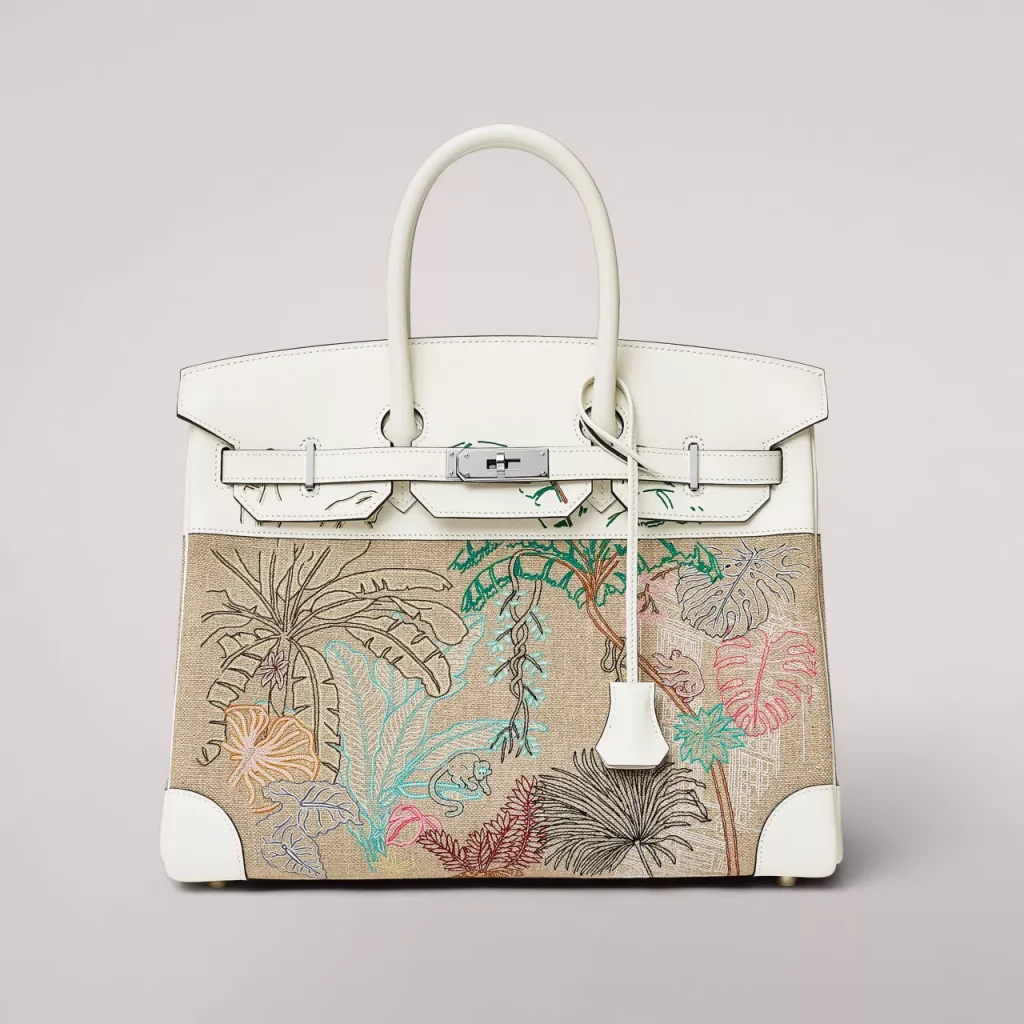
Birkin 3-en-1: Good things come in threes with the Birkin! The famous tote holdall becomes effortlessly light with a single, swift gesture. One: a canvas clutch topped with the emblematic leather flap. Two: a leather tote with side straps and turnlock. And three: clutch and tote together recreate the eternal Birkin.
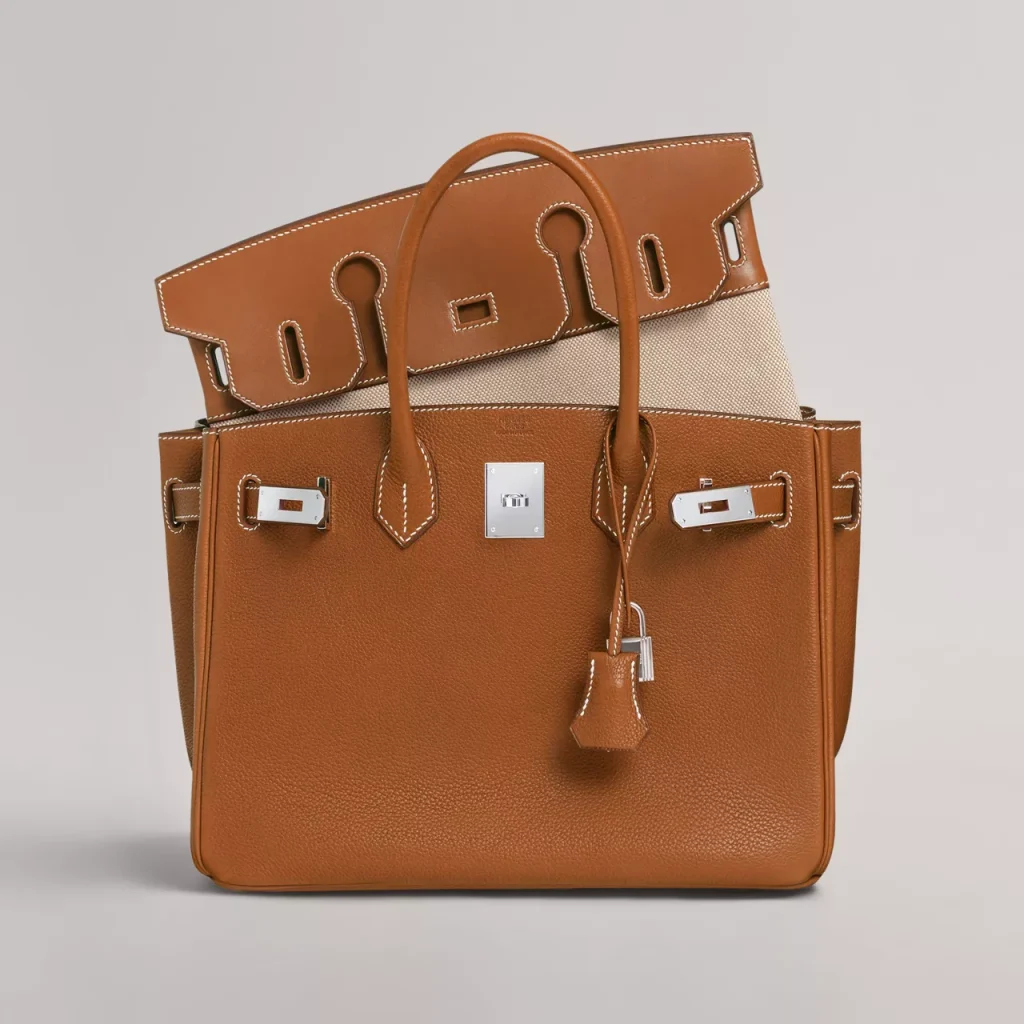
The Tressage Birkin: Introduced in 2018 as Hermès’s signature entry in the Tressage (“braided”) collection, this Birkin elevates weaving to haute-couture status with multicoloured leather strips hand-braided into mosaic-like panels over 40–50 hours by specialist artisans. Offered only in 30 cm and 35 cm formats and produced in just three limited colourways, its interplay of leather edges and light—set off by smooth calfskin handles and strap anchors—has driven secondary-market prices to 1.5×–2× retail.
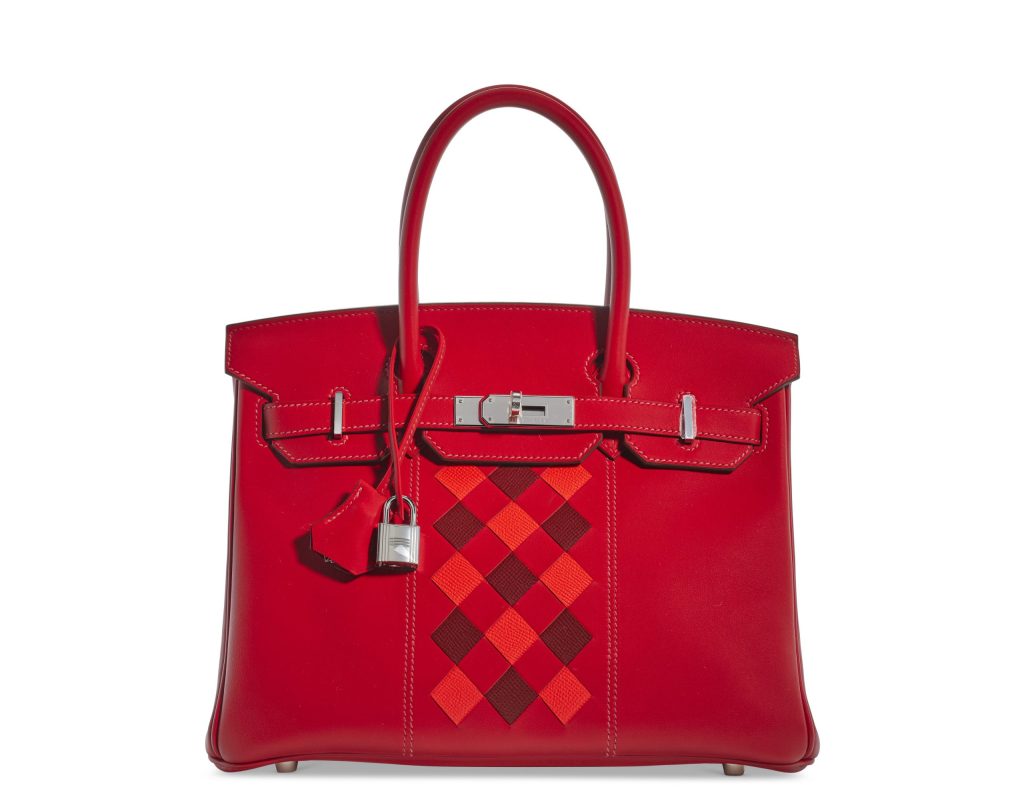
Sunrise & Sunset Birkins: First unveiled in 2020, these vibrant seasonal showstoppers merge Hermès’s artisanal precision with a playful rainbow palette rendered in the house’s refined Sellier construction. The Sunrise Rainbow combines apricot, bleu agate, magnolia, and rouge casaque Epsom panels; the Sunset Rainbow blends lime, rose confetti, terre battue, and sesame. Each 25 cm and 30 cm silhouette features exposed tone-on-tone stitching and precision-cut curved panels, and with fewer than 50 pieces total, they’re instant collector favorites.
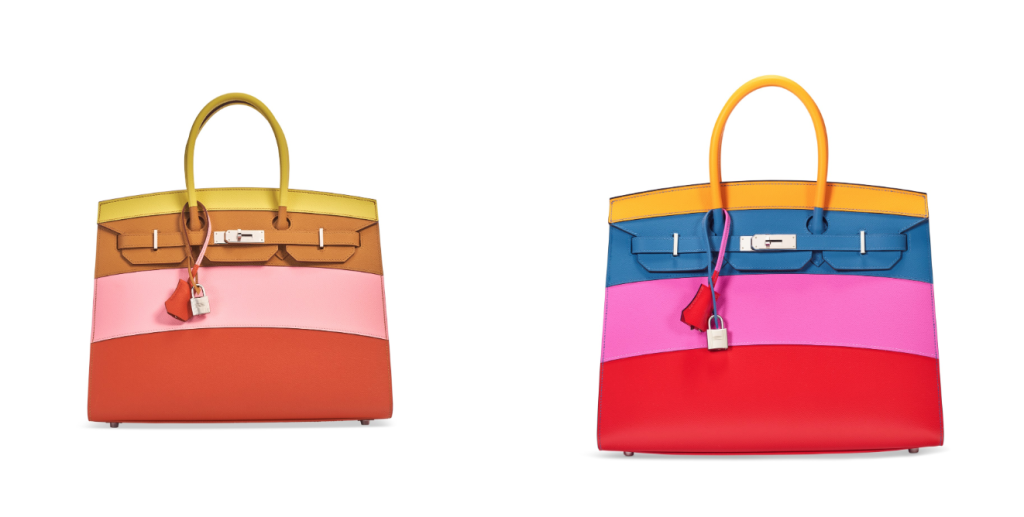
Cargo Birkin: Debuting in 2020, the Cargo Birkin reinterprets the original 1981 Birkin’s ethos of functionality in a durable yet lightweight canvas trimmed with leather piping. Fitted with two zipped pockets, two slip pockets, a bespoke coffee-cup sleeve, and robust silver or gold-plated hardware, it’s Hermès’s most utilitarian Birkin. Offered in 35 cm and 40 cm silhouettes and limited to under 30 pieces per colorway, it pays homage to the model’s origins while meeting modern urban needs.
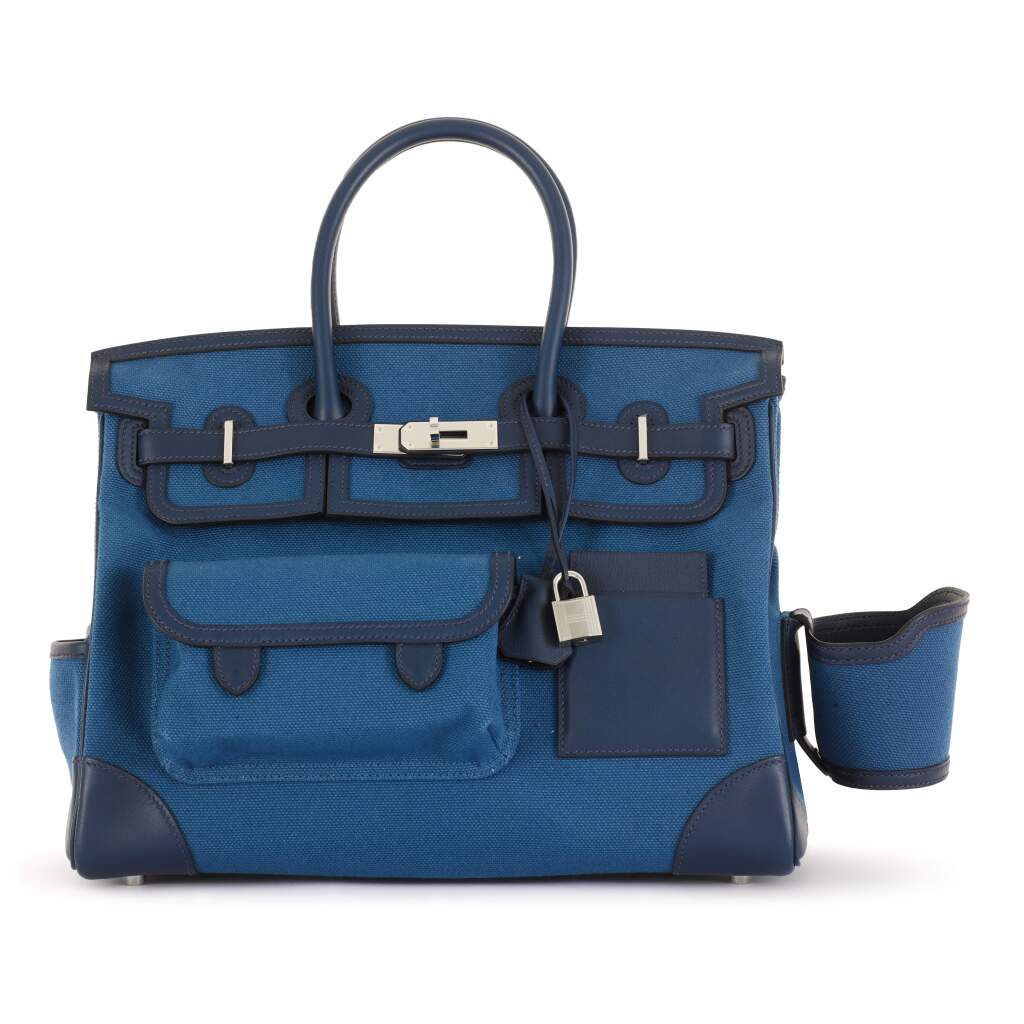
Chapter 9: Birkin waitlist myth
In the 1990s and early 2000s, rumors spread about a “Birkin Waitlist”—an exclusive list at each boutique that supposedly prioritized clients. Customers believed that once their name came up, they’d receive an offer to purchase the coveted bag. Boutique associates were known to respond with:
- “We do not have a Birkin in stock,” or
- “Please put your name on the waitlist, and we’ll call you when one becomes available.”
This waitlist was rumored to last from several months to even three years, feeding the allure and mystique of the Birkin.
However, these stories began to unravel when buyers started sharing their experiences on handbag forums. A pattern emerged: some clients were offered Birkins on their first visit, while others were advised to build a purchasing history—especially by buying non-leather items—or to establish rapport with sales associates.
Some even claimed that appearing “appropriately dressed” increased their chances. Over time, it became clear that the waitlist was either fictional or a subtle sales strategy used to build exclusivity and desire.
So, what’s the best strategy to get a Birkin? Ask nicely—and you just might get lucky.
Today, Hermès boutiques receive limited, unpredictable inventory twice a year. Even store associates are sometimes unaware of what will arrive.
Relationships matter more than ever; the most successful clients build trust with their sales advisors.
For those unable or unwilling to play the Hermès game, the secondary market offers alternatives—but at a premium. Platforms like The RealReal, Sotheby’s, and Farfetch provide access to authentic Birkins, though risks of counterfeits and inflated prices remain.
Chapter 10: Celebrity influence
- Victoria Beckham: Owns over 100 Birkins.
- Kate Moss: Famously practical—often seen carrying her Birkin in casual settings.
- Jennifer Lopez: Known for taking her Birkin to the gym.
- Kim Kardashian: At the center of a notable resale controversy involving custom-painted Birkins.
Chapter 10: The popularity of the Birkin
The Hermès Birkin bag was an instant commercial success. However, Hermès employed a clever marketing tactic that it’s now known for: artificial scarcity.
The brand would limit the number of Birkins each store could order. At Podium—Hermès’ twice-yearly international buying event in Paris—store managers could select only a limited number of Birkins, based on their boutique’s client base and performance.
This intentional limitation created the illusion of scarcity, a strategy Hermès continues to use today.
The actual number of Birkin bags in global retail and resale circulation is unknown. Hermès doesn’t release production numbers, maintaining a veil of secrecy around the process. However, in 2014, The Economist estimated that approximately 70,000 Birkin bags were produced that year alone.
Chapter 11: The Birkin as an investment
Birkin bags have historically outperformed traditional investments such as gold and stocks, with resale prices sometimes doubling retail values due to rarity and condition.
In 2016, a study by the online marketplace Baghunter found that the value of Birkin bags had grown faster than both the S&P 500 and the price of gold, with a return on investment of more than 500% over 35 years.
Credit Suisse and Deloitte noted, however, that compared to other luxury collectibles such as jewelry, watches, and Chanel handbags, Birkin bags show higher market volatility, making them more comparable to a hedge-fund investment.
Birkins are considered investment pieces due to their enduring appeal and timeless design. When first produced in 1984, a Birkin retailed for around $2,000. Today, a standard leather Birkin sells for around $10,000, while a crocodile and diamond-encrusted model can retail for as much as $200,000.
The Birkin is the most sought-after Hermès bag, with nearly 1 million searches each month. It remains the brand’s most iconic piece—a true testament to craftsmanship and exclusivity.
For example, a Togo leather Birkin purchased at $9,850 can resell for over $20,000, depending on rarity and condition.
Studies have shown that Birkin bags often outperform gold and stock market investments, boasting returns exceeding 500% over three decades.
Chapter 12: Limited editions and special collections
- Ghillies Birkin: Features brogue-inspired leather detailing.
- Club Birkin: A sports-inspired design with exotic accents.
- Grand Mariage Birkin: Combines multiple exotic materials—lizard, ostrich, and alligator—for a luxurious finish.
- Fringe Birkin: Features playful fringe on the front panel, custom-made for clients (Horseshoe Stamp).
- Endless Road Birkin: Includes intricate appliqué work inspired by Californian roadways—part of the 2018 menswear flagship collection.
- Touch Birkin: Combines exotic leather (like alligator or crocodile) with standard leather elements for contrast and collectibility.
- Officier Birkin: Inspired by military aesthetics, with leather stripes evoking uniform insignia.
Chapter 13: Care and maintenance
To preserve a Birkin’s value:
- Store it properly in its original dust bag.
- Protect the handles with silk scarves (Twillys) to prevent darkening from hand oils.
- Perform regular gentle cleaning and avoid overexposure to sunlight, humidity, or rain.
- Handle with clean hands and avoid placing the bag directly on the floor.
- Use a premium bag pillow to maintain the interior structure and prevent sagging or creasing during storage. For example, LA FORMA I Bag Pillows are handcrafted to fit each model precisely, offering long-term protection while preserving the bag’s original silhouette.
Proper care ensures that the Birkin maintains both its structural integrity and resale value over time.
Chapter 14: Jane Birkin’s original bag and enduring legacy
Jane Birkin’s original Birkin bag—crafted by Hermès as a prototype—featured several distinctive elements that were never commercially replicated. Among them:
- A non-removable shoulder strap
- Unique hardware details
- Her initials “J.B.” engraved on the bag
These characteristics made the prototype not just unique, but also deeply personal and emblematic of Birkin’s effortless, utilitarian approach to fashion. For Hermès, it marked a turning point: a bag born not only from luxury tradition, but also from real-life practicality.
Although the Birkin bag would go on to become a symbol of wealth and exclusivity, Jane Birkin never treated it as such. In her lifetime, she used just one Birkin at a time—always in neutral tones—and wore each one until it was thoroughly worn out. When a bag reached the end of its life, she would auction it off for charitable causes, then begin using a new one, gifted by Hermès.
Far from the polished, pristine image often associated with the bag, Jane’s Birkins were lived in. She adorned them with patches, stickers, keychains, and charms, saying this made the bag feel less “snobbish”, and more aligned with her casual, iconically French style. Her Birkins were often overfilled and unstructured—carried more like a tool than a trophy.
Initially, Jane accepted only a free bag in exchange for lending her name to the creation. Over time, Hermès began providing her with a symbolic royalty for the use of her name. She never profited personally from it; instead, she donated the entire annual sum to charity. In 2012, The Telegraph reported this royalty as £30,000 per year.
Chapter 15: Future of Birkin bags
The Birkin’s allure and value are expected to persist well into the future, thanks to Hermès’ meticulous control over exclusivity, quality standards, and supply chain secrecy.
As more collectors, investors, and fashion lovers enter the luxury market, the rarity and prestige of owning a Birkin will only grow. Limited annual releases, carefully curated color selections, and tightly guarded production practices ensure that demand will always outpace supply.
While fashion trends may come and go, the Birkin continues to transcend time, representing not just status or style—but legacy.
Conclusion: Why a Birkin is worth it
The Hermès Birkin bag transcends fashion. It is a symbol of craftsmanship, exclusivity, history, and investment potential.
Owning a Birkin isn’t simply about possessing luxury—it’s about:
- Appreciating artistry
- Embracing heritage
- Understanding long-term value
To own a Birkin is to understand that true luxury is not loud. It doesn’t scream. It whispers—of heritage, of intention, of beauty that endures.
The Birkin isn’t just something you carry. It’s something you live with, grow into, and ultimately, leave behind.
It isn’t just a bag.
It’s the Birkin.
